Ernst Haas
“Bored with obvious reality, I find my fascination in transforming it into a subjective point of view.”
Ernst Haas, an Austrian-born photographer, revolutionized the world of photography with his pioneering work in color. His exceptional ability to transform ordinary scenes into extraordinary compositions made him a legendary figure in street photography and beyond.
Early Life and Career
Ernst Haas was born on March 2, 1921, in Vienna, Austria. His early years were spent in a city rich with cultural heritage and artistic influence, which undoubtedly shaped his creative inclinations. Initially, Haas aspired to become a doctor, a path influenced by his family’s expectations and the socio-economic stability it promised. However, the devastation of World War II profoundly impacted his life and career trajectory.
After the war, Vienna was a city marked by chaos and reconstruction. It was in this environment that Haas found solace and expression through photography. In 1946, he acquired his first camera, a Rolleiflex, and began to experiment with the medium. His first significant photographic project documented the return of Austrian prisoners of war, capturing the raw emotions and stark realities of their experiences. These images were published in the magazine Heute, garnering critical acclaim and bringing Haas into the limelight.
The success of this project caught the attention of Life magazine, which featured his work and offered him a position as a staff photographer. Haas, valuing his artistic independence, declined the offer but continued to collaborate with the magazine.
In 1949, Haas joined Magnum Photos, an esteemed cooperative founded by Robert Capa, Henri Cartier-Bresson, George Rodger, and David “Chim” Seymour. This affiliation provided Haas with a platform to collaborate with some of the most influential photographers of the time. His relationships with Capa and Cartier-Bresson were particularly significant; they encouraged his exploration of color photography, a relatively uncharted territory in photojournalism during the early 1950s .
Haas’s move to the United States in 1951 marked a new chapter in his career. The vibrant and diverse urban landscape of New York City became his canvas. Embracing Kodachrome film, he started to experiment with color photography, capturing the city’s dynamic energy and transforming everyday scenes into visually striking compositions. His work during this period was characterized by a meticulous attention to color, light, and movement, distinguishing him as a pioneer in the field.
In 1953, Life magazine published Haas’s 24-page color photo essay on New York City, a groundbreaking feature that highlighted his innovative use of color and solidified his reputation as a master of the medium. This publication was significant not only for Haas’s career but also for the broader acceptance and appreciation of color photography in the art and photojournalism communities.
Throughout the 1950s and 1960s, Haas continued to push the boundaries of color photography, creating a body of work that was both technically brilliant and artistically profound. His ability to blend the aesthetic qualities of painting with the immediacy of photography earned him numerous accolades and a prominent place in photographic history. His collaborations with major publications like Vogue, Look, and Du magazine further cemented his influence and reach.
Photographic Style and Techniques
Ernst Haas is best known for his groundbreaking use of color photography. At a time when black-and-white dominated the field, Haas’s vibrant color images stood out. He began experimenting with Kodachrome color film in the early 1950s, pushing the boundaries of what was considered acceptable in photojournalism and art photography. His work often featured:
• Selective Focus and Narrow Depth of Field: Haas used these techniques to isolate subjects and create a painterly effect.
• Blurred Motion: He captured movement in a way that conveyed emotion and dynamism, often using slow shutter speeds.
• Abstract Compositions: Haas’s images frequently resembled abstract paintings, emphasizing form and color over traditional narrative.
Career Highlights
• 1953: Life magazine published his 24-page color photo essay on New York City, a groundbreaking feature that highlighted his innovative use of color.
• 1962: The Museum of Modern Art in New York hosted a retrospective of his work, the first color photography exhibition at the institution.
• Books: Haas authored several influential books, including The Creation (1971) and In America (1975), which showcased his mastery of color and composition.
• Awards: He received numerous accolades, including the prestigious Hasselblad Award in 1986.
Photography Gear
Cameras
• Leica M3: Known for its precision and compact design, the Leica M3 was ideal for street photography, allowing Haas to shoot candidly and spontaneously.
• Rolleiflex: This medium format camera provided exceptional image quality and was perfect for Haas’s detailed, high-resolution work.
Lenses
• Summicron 50mm f/2: A versatile lens that offered sharpness and excellent low-light performance, enabling Haas to capture a range of scenes with clarity.
• Elmarit 90mm f/2.8: This telephoto lens allowed Haas to isolate subjects from a distance, creating intimate portraits without intruding on the scene.
Film
• Kodachrome: Renowned for its rich color saturation and fine grain, Kodachrome film was instrumental in Haas’s ability to produce vibrant and dynamic images.
Photography Books
“Ernst Haas: New York in Color, 1952-1962” is a captivating collection that showcases Haas’s early color photography during his time in New York City. Moving from Vienna to New York in 1951, Haas embraced the vibrant energy of the city, capturing its essence through the lens of Kodachrome film. This book highlights his remarkable talent for color photography, presenting images rich in depth, lyricism, and dramatic tension. Practicing photographers will find inspiration in Haas’s innovative use of color to convey the dynamism of urban life, demonstrating his technical prowess and artistic vision.
“Ernst Haas: The American West” offers a poignant portrayal of America’s geographic and cultural landscapes through Haas’s color-saturated images. From desert storms and neon lights to small-town parades and rural poverty, Haas’s photographs communicate a unique pictorial language filled with poetry and light. This book serves as both a national portrait and a celebration of analog color photography, making it a valuable resource for photographers interested in capturing the vast and diverse beauty of the American West. Haas’s ability to blend a journalist’s perspective with an artist’s eye offers profound insights into the storytelling potential of color photography.
“Ernst Haas: Abstract” is a visually stunning collection that showcases Haas’s most cherished and personal project. Originally conceived as an audiovisual slideshow, this book features high-quality reproductions of images captured from 1952 to 1984. While titled “Abstract,” many photographs depict recognizable surfaces and scenes, revealing Haas’s mastery of color, light, and composition. Photographers will appreciate the way Haas transforms everyday details into poetic visual narratives, encouraging a deeper exploration of the abstract elements in their surroundings. David Campany’s introductory essay provides valuable context and enhances the reader’s understanding of Haas’s artistic journey.
“In America” presents an extraordinary collection of images that capture the essence of American life and landscapes. From natural phenomena to man-made creations, Haas offers unique glimpses into “living Americana.” This book features 105 full-page color plates, each showcasing Haas’s supreme ability to depict the beauty and diversity of the American experience. Photographers will find this collection inspiring for its comprehensive portrayal of America’s vastness and the delicate interplay of land, water, and sky. Haas’s work in this volume serves as a testament to his skill as a color photographer and his deep connection to the subject matter.
Quotes
“There is only you and your camera. The limitations in your photography are in yourself, for what we see is what we are.”
“Bored with obvious reality, I find my fascination in transforming it into a subjective point of view.”
“The camera doesn’t make a bit of difference. All of them can record what you are seeing. But you have to SEE.”
“Without touching my subject I want to come to the moment when, through pure concentration of seeing, the composed picture becomes more made than taken.”
“A picture is the expression of an impression. If the beautiful were not in us, how would we ever recognize it?”
Legacy and Influence
Ernst Haas’s contributions to photography have left an indelible mark on the field. His innovative use of color and abstract compositions paved the way for future generations of photographers. Haas’s work remains influential, continuing to inspire photographers to see the world through a different lens and to explore the artistic potential of color and form.
Photographers like Saul Leiter and Joel Meyerowitz have shared Haas’s passion for color and street photography, contributing to the rich legacy of visual storytelling that Haas helped to establish.
Josef Koudelka
“I prefer people to look at my pictures and invent their own stories.”
Josef Koudelka, born in 1938 in Boskovice, Czechoslovakia, is a name that resonates deeply within the world of documentary photography. His compelling black-and-white images, often exploring themes of exile, displacement, and the human condition, have established him as a monumental figure in the realm of visual storytelling.
Early Life and Career
Koudelka’s journey into photography began in an unconventional manner. Initially trained as an aeronautical engineer, Koudelka worked in Prague and Bratislava from 1961 to 1967. His passion for photography, however, quickly overshadowed his engineering career. He started by capturing images of theater productions, and this early work laid the foundation for his distinctive photographic style.
In 1968, Koudelka’s life took a dramatic turn. He documented the Warsaw Pact invasion of Prague, producing images that would later be smuggled out of the country and published anonymously in Magnum Photos. These powerful images earned him international acclaim and the Robert Capa Gold Medal in 1969 for his courage and enterprise in photographic reporting.
Photographic Style and Techniques
Koudelka’s work is characterized by its stark black-and-white imagery, which emphasizes contrast and texture to convey powerful emotions and narratives. His approach to photography is deeply immersive; he often spends extended periods with his subjects, capturing their lives with an authenticity that few can match.
Key Elements of Koudelka’s Style:
• High Contrast: Koudelka’s use of high contrast in black-and-white photography creates a dramatic effect, highlighting the subjects and their environments in a striking manner.
• Panoramic Format: Later in his career, Koudelka adopted the panoramic format, particularly for his landscape work. This technique allowed him to capture wide vistas and complex scenes in a single frame, providing a more comprehensive view of his subjects.
• Human Condition: A recurring theme in Koudelka’s work is the exploration of the human condition. Whether documenting the lives of Roma people or the environmental devastation in the Black Triangle, his images always strive to tell the deeper story of human experiences and struggles.
Career Highlights
• Gypsies (1975): This seminal work documents the lives of Roma communities in Eastern Europe. Koudelka’s empathetic portrayal brought attention to their culture and struggles, offering a rare glimpse into a marginalized community.
• Exiles (1988): This book reflects Koudelka’s own sense of displacement and wandering after leaving Czechoslovakia. The images capture the essence of exile and the search for identity and belonging.
• The Black Triangle (1994): This project documents the environmental destruction in the Ore Mountains region, showcasing Koudelka’s ability to find aesthetic beauty in devastation and to comment on human impact on nature.
• Wall (2013): In this series, Koudelka captures the imposing barrier between Israel and Palestine, reflecting his own experiences growing up behind the Iron Curtain and providing a poignant commentary on division and conflict.
Photography Gear
• Leica M4: Known for its reliability and compact size, the Leica M4 was Koudelka’s camera of choice during the Soviet invasion of Prague. Its discreet design allowed him to capture images under dangerous conditions.
• Rolleiflex: This medium-format twin-lens reflex camera was used by Koudelka for many of his early theater and portrait works, providing high-quality images with rich detail.
• Panoramic Cameras: For his landscape work, Koudelka often used panoramic cameras, such as the Fuji GX617. These cameras allowed him to capture expansive scenes with a level of detail and breadth that standard formats couldn’t achieve.
Photography Books
“Invasion 68: Prague” captures the profound and turbulent moments of the Soviet-led invasion of Czechoslovakia in August 1968. Josef Koudelka, who had never photographed a news event before, found himself amidst the chaos and captured a series of powerful images that documented the invasion. These photographs were smuggled out of the country and credited to an anonymous Czech photographer to avoid reprisals. The book includes nearly 250 images, most of which are published for the first time, alongside press and propaganda quotations from the era.
This book offers a profound look into a significant historical event, providing a rich source of inspiration and understanding of the power of documentary photography. Featuring previously unpublished photographs, it gives insight into Koudelka’s extensive archive and his meticulous selection process. The inclusion of contemporary press quotes enhances the narrative, demonstrating how to weave text and images to tell a compelling story, making it a valuable resource for practicing photographers.
“Josef Koudelka: Exiles” reflects the personal and profound experience of exile, a theme central to Koudelka’s life after he left Czechoslovakia in 1968. The photographs capture the essence of solitude and the transient nature of life through Koudelka’s years of wandering across Europe and Great Britain.
The images in “Exiles” evoke a deep sense of alienation and disconnection, offering a masterclass in conveying emotion through photography. Addressing themes of migration and transience that remain relevant, the book provides a timeless resource for photographers exploring similar subjects. The revised edition offers new insights and additional images, enriching the original narrative and providing further study material for those interested in the emotional depth of documentary photography.
“Josef Koudelka: Ruins” showcases Koudelka’s panoramic photographs of over two hundred archaeological sites across the Mediterranean. Over more than twenty years, Koudelka visited locations like Delphi, Pompeii, Petra, and Carthage, capturing stark and mesmerizing images that reflect the grandeur and decay of ancient civilizations. This book, published in conjunction with a major exhibition at the Bibliothèque nationale de France, includes essays by experts that offer additional context.
“Ruins” demonstrates the use of the panoramic format to capture vast landscapes and intricate details of historical sites. Providing a visual journey through ancient ruins, it offers inspiration for photographers interested in cultural and historical subjects. The included essays enrich the visual content, showing how interdisciplinary insights can enhance photographic projects, making it a comprehensive resource for understanding the intersection of photography and cultural history.
Quotes
“I prefer people to look at my pictures and invent their own stories.”
“The maximum, what one photograph can do, is to give you one feeling and to give you one idea.”
“I have always been interested in what happens when two lives meet, especially in those rare moments when they merge into something completely new.”
“For me, the camera is a sketchbook, an instrument of intuition and spontaneity.”
“I don’t believe in words. Words don’t last. I’m interested in images.”
“I don’t believe in words. Words don’t last. I’m interested in images.”
Legacy and Influence
Josef Koudelka’s influence on the world of documentary photography is profound and enduring. His work has inspired countless photographers to pursue authenticity and emotional depth in their images. By documenting the marginalized and the monumental with equal intensity, Koudelka has expanded the scope of what documentary photography can achieve.
A photographer with similar ability to find beauty in the midst of chaosis Sebastião Salgado, whose black-and-white images also capture the grandeur and tragedy of the human condition. Similarly, Eugene Smith shared Koudelka’s dedication to telling the stories of those often overlooked by society.
Koudelka’s work continues to be exhibited and published worldwide, ensuring that his vision and voice remain vital parts of the photographic landscape. His images serve as powerful reminders of our shared humanity and the enduring power of visual storytelling.
Abbas Attar
“My photography is a reflection, which comes to life in action and leads to meditation.”
Abbas Attar, known simply as Abbas, was an Iranian-born photographer whose work spanned over six decades, covering some of the most significant global conflicts and societal changes of the 20th and early 21st centuries. He was renowned for his compelling black-and-white photographs that went beyond mere documentation to tell profound stories about the human condition.
Early Life and Career
Born on March 29, 1944, in Khash, Iran, Abbas Attar began his career as a photographer in the 1960s. He initially worked in Paris, where he joined Sipa Press in 1971 and later Gamma in 1974. His early work involved covering major conflicts such as the Biafra War, the Vietnam War, and the South African apartheid regime. His photographs from this period are marked by their dramatic intensity and deep empathy for the subjects.
In 1981, Abbas joined Magnum Photos, a prestigious cooperative agency known for its high standards in documentary photography. This membership marked a significant turning point in his career, allowing him to reach a broader audience and engage in more extensive projects.
Photographic Style and Techniques
Abbas’s photographic style is characterized by its thoughtful composition, stark contrasts, and profound depth. He was a master of black-and-white photography, which he used to great effect to highlight the gravity and emotional weight of his subjects. Abbas believed in capturing “a suspended moment,” where the image is part of a larger narrative, suggesting continuity beyond the frame.
He approached photography with the mindset of a storyteller, often spending years on a single project to fully explore and understand his subjects. His technique involved immersing himself in the environment and patiently waiting for the right moment to capture a scene that would resonate on a deeper level. Abbas once said, “My photography is a reflection, which comes to life in action and leads to meditation. Spontaneity – the suspended moment – intervenes during action, in the viewfinder”.
Career Highlights
Throughout his career, Abbas documented many of the world’s most critical events and movements. Some of his notable works include:
• Iranian Revolution (1979): Abbas’s coverage of the Iranian Revolution is among his most acclaimed works. His photos capture the fervor and turmoil of the period, providing a vivid chronicle of the revolution’s impact on Iranian society.
• Wars and Conflicts: Abbas covered conflicts in Biafra, Bangladesh, Northern Ireland, Vietnam, and Bosnia. His work in Sarajevo during the Bosnian War, for instance, provided haunting images that captured the human cost of the conflict.
• Religious Studies: Post-revolution, Abbas turned his focus to religion. He spent years documenting the resurgence of Islam across the world, culminating in his book “Allah O Akbar: A Journey Through Militant Islam” (1994). He also explored Christianity and other religions in subsequent projects.
Photography Gear
• Leica M3/M4: Renowned for their robustness and the quality of their lenses, these cameras were ideal for the kind of in-the-moment, high-stress environments Abbas often found himself in. The Leica’s compact size and quiet shutter made it perfect for unobtrusive shooting.
• Canon EOS Series: Abbas used various models from the Canon EOS series for their reliability and versatility. The advanced autofocus system and wide range of compatible lenses allowed him to adapt to different shooting conditions quickly.
• Nikon FM2: Known for its durability and mechanical precision, the Nikon FM2 was another favorite. Its all-metal construction and dependable performance made it suitable for the rugged conditions Abbas often faced.
Photography books
In “Allah O Akbar: A Journey Through Militant Islam,” Abbas provides a comprehensive exploration of the diverse and complex nature of militant Islam across 29 countries and four continents. Over seven years, he captures the intricacies of various Muslim societies, documenting political events, revolutions, and the everyday lives of people in these regions. The book is a visual diary that delves into the internal strains and dynamics within the Islamic world. For practicing photographers, this book is invaluable for its demonstration of how to approach sensitive and volatile subjects with nuance and depth. Abbas’s ability to convey powerful narratives through his images offers profound insights into the role of a documentary photographer in capturing socio-political realities.
“In Whose Name?: The Islamic World after 9/11” documents Abbas’s journey through the Islamic world following the events of September 11, 2001. Spanning seven years, this project covers sixteen countries, including Iran, Iraq, Lebanon, and Afghanistan. Abbas’s photographs and diary excerpts provide a candid look into the social and political landscapes post-9/11. This book is particularly notable for its ability to capture the undercurrents of global disturbances and the moments of resilience and humanity amid conflict. Practicing photographers will find inspiration in Abbas’s method of capturing “the suspended moment,” a technique that freezes significant gestures and actions, making them emblematic of broader issues.
“Gods I’ve Seen: Travels Among Hindus” is a rich visual exploration of Hinduism across India, Nepal, Sri Lanka, and Bali. Over three years, Abbas delves into the mystical world of Hindu beliefs, rituals, and daily life. This book stands out for its inclusion of both black-and-white and color photographs, showcasing Abbas’s versatility and adaptability to different cultural contexts. For photographers, this book is a treasure trove of insights into capturing the essence of religious and cultural practices. Abbas’s ability to portray the spiritual and ritualistic elements of Hinduism through his lens offers valuable lessons in photographing religious subjects with sensitivity and respect.
In “Faces of Christianity: A Photographic Journey,” Abbas explores Christian communities worldwide, from Cuba to Jerusalem, Lourdes to Mali, and the United States to Russia. This book provides a visual tour of what it means to be a Christian at the dawn of a new millennium. Abbas’s images blend thoughtful observations with dramatic black-and-white photography, making this book a compelling resource for understanding the diversity and unity within Christianity. Photographers will appreciate Abbas’s approach to documenting religious practices, political contexts, and spiritual experiences, offering a model for capturing the multifaceted nature of faith.
Quotes
• “War does not limit itself to boom-boom, to the battle itself. Wars are very, very complex phenomenons, because they have a source, and it takes a while to come up, then it happens, and there are consequences. I’m more interested in the why and the afterwards of the wars.”
• “My photography is a reflection, which comes to life in action and leads to meditation. Spontaneity – the suspended moment – intervenes during action, in the viewfinder.”
• “They say ‘courage’ — O.K., you have to be courageous. But for me, courage is a lack of imagination. You cannot imagine that it’s going to happen to you, therefore you go to the battle.”
• “The choice was to think of oneself either as a photojournalist or an artist. It wasn’t out of humility that I called myself a photojournalist, but arrogance. I thought photojournalism was superior.”
• “I ask questions, I don’t leave answers. My readers should look for their answers. I give them the evidence, I hope.”
Legacy and Influence
Abbas Attar left an indelible mark on the field of documentary photography. His work not only chronicled significant historical events but also provided deep insights into the human experience. His approach to photography as a form of storytelling has influenced many contemporary photographers who seek to go beyond mere documentation to tell compelling stories.
Photographers like James Nachtwey and Don McCullin, known for their work in conflict zones, share a similar commitment to capturing the human side of war and societal upheaval. Their images, like those of Abbas, compel viewers to confront the realities of the world and reflect on the broader implications of these events.
Abbas’s work continues to be celebrated and studied for its artistic and journalistic excellence. His legacy lives on through his extensive body of work and the countless photographers he has inspired.
Thomas Hoepker
“A photo can be more than just a picture. It can be a piece of history.”
Thomas Hoepker (Instagram) is a name synonymous with compelling and insightful documentary photography. Born in Munich, Germany, in 1936, Hoepker has carved a niche for himself with his striking and often poignant images that capture the essence of human experiences. As a celebrated member of Magnum Photos, his work spans decades and continents, documenting everything from the grandeur of the Olympic Games to the harrowing aftermath of 9/11.
Early Life and Career
Hoepker’s journey into photography began at an early age. Fascinated by images, he started experimenting with photography as a teenager, initially using a plate camera and later transitioning to a 35mm Akarette camera. His formal education in art history and archaeology provided a solid foundation, enriching his understanding of visual storytelling.
In the early 1960s, Hoepker worked for Münchner Illustrierte and Kristall magazines, traveling extensively and honing his skills in reportage photography. His big break came in 1964 when he joined Stern magazine as a photo reporter. This role allowed him to travel the world and cover significant events, bringing his unique perspective to a broader audience.
Photographic Style and Techniques
Hoepker’s photographic style is marked by a blend of meticulous composition and an acute sensitivity to the human condition. His images are not just visual records but are imbued with narratives that speak to the observer on a deeper level. He is adept at using color to enhance the emotional impact of his photos, a technique that sets him apart from many of his contemporaries.
Techniques:
• Use of Color: Hoepker’s transition to color photography in the 1970s marked a significant evolution in his work. His ability to use color to convey mood and context adds a layer of complexity to his images.
• Composition: He employs strong compositional techniques, often using leading lines, framing, and the rule of thirds to create visually compelling photographs.
• Human Element: His focus on capturing candid human expressions and moments adds authenticity and emotional depth to his work.
Career Highlights
Throughout his career, Thomas Hoepker has achieved numerous milestones that highlight his influence and contribution to documentary photography.
• Muhammad Ali Series: Hoepker’s images of Muhammad Ali, captured over several decades, are some of his most iconic works. These photographs chronicle the boxer’s career and personal life, offering a nuanced portrayal of the sports legend.
• 9/11 Documentation: His haunting images of the September 11 attacks in New York City are widely recognized. These photos not only document the event but also reflect the emotional and social impact of the tragedy.
• Magnum Photos: Hoepker’s association with Magnum Photos began in 1964. He served as the president of the prestigious agency from 2003 to 2006, influencing the direction and ethos of the organization.
Photography Gear
Hoepker’s choice of gear has evolved over the years, reflecting technological advancements and his own changing needs as a photographer.
Cameras:
• Leica M Series: Known for their precision and durability, Leica cameras have been a staple in Hoepker’s kit. The Leica M series, particularly, is favored for its compact size and exceptional lens quality, making it ideal for street and documentary photography.
• Canon AE-1: This 35mm SLR camera, popular in the 1970s and 80s, is renowned for its reliability and ease of use, which suited Hoepker’s need for flexibility in various shooting conditions.
Lenses:
• 50mm f/1.4: A versatile lens that provides a natural field of view, making it perfect for portraits and general photography.
• 35mm f/2: Ideal for wide-angle shots, this lens is great for capturing expansive scenes without distorting the subjects.
Photography Books
“New York: Revised Edition” - New York: Revised Edition by Thomas Hoepker, is an expansive visual documentation of New York City from the early 1960s to the present. Hoepker, a legendary photojournalist and former president of Magnum Photos, captures the evolving spirit of the city through its vibrant streets and diverse inhabitants. This book is invaluable for practicing photographers, offering insights into urban photography, the use of natural light in dynamic environments, and the importance of capturing the essence of a city’s character. The images reflect the complex moods of New York, making it a rich source of inspiration and technical guidance for photographers aiming to master street photography.
“Thomas Hoepker - Big Champ” - Thomas Hoepker - Big Champ, presents an intimate portrait of Muhammad Ali through the lens of Thomas Hoepker. This book goes beyond Ali’s public persona, showcasing lesser-known and previously unpublished photographs that reveal private moments and off-ring encounters. For photographers, this collection is a masterclass in portraiture and the documentation of a cultural icon. Hoepker’s ability to capture the essence of Ali’s personality, even in candid moments, provides valuable lessons on timing, composition, and the subtle art of storytelling through images.
“Thomas Hoepker Photographien 1955-2005” - Thomas Hoepker Photographien 1955-2005, is a comprehensive retrospective of Hoepker’s work spanning five decades. This German edition showcases a wide array of his photographic achievements, from early black-and-white images to his later color works. Practicing photographers will find this book a treasure trove of technical expertise and artistic inspiration. Hoepker’s evolution in style and technique is meticulously documented, providing insights into his approach to composition, use of light, and adaptation to different photographic technologies over the years.
“Thomas Hoepker - Strange Encounters” - Thomas Hoepker - Strange Encounters, compiles a selection of Hoepker’s more whimsical and unexpected images taken throughout his career. This book highlights his keen eye for the absurd and humorous moments in everyday life, capturing fleeting scenes that often go unnoticed. For photographers, “Strange Encounters” emphasizes the importance of spontaneity and the ability to see beyond the ordinary. It teaches the value of observation, patience, and the readiness to capture the serendipitous moments that add depth and humor to the human experience. Each photo is accompanied by informative captions, offering context and insights into Hoepker’s thought process and technique.
Quotes
“A photo can be more than just a picture. It can be a piece of history.”
“The challenge is to capture the essence of the moment without disturbing it.”
“Color adds a layer of reality that black and white cannot convey.”
“A good photograph is one that communicates a fact, touches the heart, and leaves the viewer a changed person for having seen it.”
“Documentary photography is about bearing witness to the world.”
Legacy and Influence
Thomas Hoepker’s impact on documentary photography is immense. His ability to blend art and journalism has influenced countless photographers and solidified his place in the pantheon of great photographers. His work not only provides a visual history of the last half-century but also challenges viewers to engage with the world more deeply.
Similar style and approach can be seen in the works of contemporary photographers like Sebastião Salgado, who also uses powerful imagery to address social issues, and Steve McCurry, known for his vibrant color photography and compelling portraits.
Conclusion
Thomas Hoepker’s career is a testament to the power of photography to document, influence, and inspire. For practicing photographers, his work serves as a powerful reminder of the importance of empathy, composition, and the ability to see beyond the surface. Whether capturing the face of a legendary boxer or the aftermath of a tragedy, Hoepker’s images resonate with truth and humanity, offering lessons that transcend time and place.
Alec Soth
"I believe in the basic notion that the world is infinitely interesting."
Alec Soth (website), born in 1969, is an American documentary photographer renowned for his poetic and intimate visual storytelling. His work often explores the American experience, capturing the beauty and melancholy of overlooked places and people. Let’s talk about the life and career of Alec Soth, examining his photographic style, techniques, and the legacy he continues to build.
Early Life and Career
Alec Soth grew up in Minnesota and developed a passion for photography from an early age. He studied at Sarah Lawrence College in New York, where he honed his skills and began to develop his unique visual voice. After graduating, Soth returned to Minnesota and started working on various photographic projects that would later shape his career.
In 2004, Soth gained international recognition with his series "Sleeping by the Mississippi," which showcased his talent for capturing the spirit of the American landscape and its inhabitants. His work has been featured in numerous exhibitions and publications since then, including the prestigious Magnum Photos agency, of which he became a nominee in 2004 and a full member in 2008.
Photographic Style and Techniques
Alec Soth's photography is characterized by its quiet intimacy and attention to detail. He often focuses on the mundane and the overlooked, revealing the beauty and humanity in his subjects. His images evoke a sense of nostalgia and melancholy, capturing the essence of the American experience. In terms of composition, Soth favors a straightforward, almost minimalist approach that allows the viewer to fully engage with the subject matter.
Throughout his career, Soth has used a large-format 8x10 view camera to produce high-quality, detailed images. This choice of equipment, combined with his keen eye for composition and narrative, has led to a distinctive visual style that sets his work apart.
Career Highlights
Some of Alec Soth's most notable projects include:
"Sleeping by the Mississippi" (2004): This series brought Soth widespread acclaim and features a collection of photographs taken along the Mississippi River, showcasing the lives of its residents and the landscapes they inhabit.
"Niagara" (2006): In this project, Soth explored the town of Niagara Falls and its surrounding areas, capturing the tension between the romantic ideal of the falls and the often harsh reality of life in the region.
"Broken Manual" (2010): This body of work focuses on individuals who have chosen to live off the grid and examines the desire for solitude and escape from modern society.
"Songbook" (2015): Inspired by the tradition of the American songbook, Soth traveled across the United States to create a visual record of the country's contemporary social landscape.
Photography Gear
Alec Soth is known for using a large-format 8x10 view camera, which allows him to capture highly detailed images with a remarkable depth of field. This type of camera is ideal for his style of documentary photography, as it enables him to create visually stunning images that draw the viewer into the scene. The use of large-format film also results in a slower, more deliberate approach to photography, which aligns with Soth's focus on intimate storytelling and attention to detail.
Photography Books
"Sleeping by the Mississippi" is a defining publication in the photobook era by Alec Soth. Evolving from a series of road trips along the Mississippi River, this book captures America's iconic yet oft-neglected 'third coast' through a richly descriptive mix of individuals, landscapes, and interiors. For practicing photographers, the book offers insights into Soth's unique approach to documentary-style photography with poetic sensibility, capturing a consistent mood of loneliness, longing, and reverie.
"Songbook" sees Alec Soth shifting his focus towards community life in America. Assuming the role of a community newspaper journalist, Soth traveled from state to state between 2012 and 2014, attending various meetings, dances, festivals, and gatherings. Stripping the images of their news context, Songbook highlights the root desire for human connection and portrays a lyrical representation of the tension between American individualism and the desire to unite, providing inspiration and insight for photographers exploring themes of community and connection.
"A Pound of Pictures" is a celebration of the photographic medium, featuring an entirely new collection of work by Alec Soth made between 2018 and 2021. Depicting a vast array of subjects, this book reflects on the photographic desire to capture and crystallize experience, as well as the significance of printed images in representing and recollecting those experiences. This book offers practicing photographers a look into Soth's thought process and the connection between the ephemeral and the physical in photography.
"Gathered Leaves Annotated" brings together five of Alec Soth's major books in a single, compact, and densely detailed volume. Reproducing every spread from these books with detailed annotations, this unique publication offers an updated roadmap through Soth's oeuvre, providing insights into his creative process and reinforcing his position as a master of the book form. This compilation serves as an invaluable resource for photographers looking to explore Soth's diverse body of work and learn from his artistic journey.
Quotes
"I believe in the basic notion that the world is infinitely interesting."
"Photography is a very lonely medium. There's a kind of beautiful loneliness in voyeurism."
"I think of my work as being about the relationship between the landscape and the people who inhabit it."
"I'm not trying to make statements about America. I'm trying to find questions about it."
"For me, photography is about storytelling. I'm interested in the poetic and the narrative."
Legacy and Influence
Alec Soth's photography has had a significant impact on the world of documentary photography, particularly for those interested in exploring the American experience. His work has resonated with photographers like Bieke Depoorter, who also seeks to capture the essence of everyday life and the human experience through her images.
In a different context, another photographer who shares a similar sensibility to Soth is Christopher Anderson, known for his intimate and empathetic approach to documenting the lives of his subjects. Both photographers excel at creating a sense of connection between the viewer and the people they photograph, highlighting the beauty in the mundane.
Alec Soth's work has been widely exhibited and collected by institutions such as the San Francisco Museum of Modern Art, the Museum of Fine Arts in Houston, and the Walker Art Center in Minneapolis. His influence is felt not only in the world of photography but also in the broader art world, where his ability to tell compelling stories through images has garnered widespread admiration.
In conclusion, Alec Soth's intimate and evocative approach to documentary photography has left a lasting mark on the field, inspiring both established and emerging photographers to find beauty and meaning in the ordinary. His work serves as a reminder of the power of photography to tell stories, explore the human experience, and create connections between people and places.
Christopher Anderson
"The camera is just a tool; the real magic happens when the photographer can find the humanity in their subjects."
Christopher Anderson (website) is a renowned documentary photographer, best known for his intimate and emotive visual storytelling. A member of the prestigious Magnum Photos agency since 2005, Anderson's work spans photojournalism, portraiture, and fine art photography, and has been featured in numerous publications and exhibitions worldwide. His distinctive style and approach to documentary photography continue to inspire and influence generations of photographers.
Early Life and Career
Born in 1970 in Canada, Christopher Anderson grew up in Texas and later attended the University of Texas at Austin, where he studied journalism. He began his career as a freelance photographer, covering news events and human interest stories around the world. Anderson first gained recognition for his poignant coverage of the 1999 conflict in Kosovo, followed by his powerful images of the 2000 sinking of the Kursk submarine in Russia.
Anderson's breakthrough project, "Son," documented the birth and early life of his son, offering an intimate look at fatherhood and family life. This deeply personal work garnered widespread acclaim and led to the publication of his first monograph in 2003.
Photographic Style and Techniques
Christopher Anderson's photography is characterized by its emotional depth, empathy, and humanity. His images often focus on the personal and emotional aspects of his subjects, revealing their vulnerability and inner strength. Anderson's ability to capture the essence of a person or situation is what sets him apart from many of his contemporaries.
Anderson's approach to documentary photography is immersive, often spending significant amounts of time with his subjects to build trust and gain a deeper understanding of their lives. His use of natural light and shadow, along with his keen eye for composition, further enhances the emotional impact of his images.
Career Highlights
Throughout his career, Christopher Anderson has been recognized with numerous awards and honors, including the 2001 Robert Capa Gold Medal for his work in Afghanistan and the 2007 World Press Photo award for his series on the Israeli-Hezbollah conflict.
Some notable projects by Anderson include:
"Capitolio" (2009), a visual exploration of Venezuela under Hugo Chávez's rule
"Stump" (2014), a series of portraits of American politicians during the 2012 presidential campaign
"Approximate Joy" (2018), a collection of intimate portraits that reflect on the human condition
Photography Gear
Christopher Anderson is known to prefer compact, unobtrusive cameras that allow him to work closely with his subjects. Some of his preferred gear includes:
Leica M-Series cameras, valued for their compact size and outstanding image quality
A variety of prime lenses, such as the Leica Summicron 35mm, which offer a natural perspective and excellent low-light performance
Photography Books
"Christopher Anderson: Capitolio" is a cinematic journey through the upheavals of contemporary Caracas, Venezuela. This book presents a poetic and politicized vision of a city and country ripping apart at the seams under popular unrest. Anderson captures the chaotic intermingling of violence and sensuality in a largely unreported environment, providing a unique perspective on a tumultuous situation.
In "Christopher Anderson: Stump", Anderson showcases his influential political photography with rare behind-the-scenes access to the inner workings of American political theater. This collection features color and black-and-white photographs from recent campaign trails, scrutinizing the rhetorical masks of politicians and audience members alike. The images, when removed from the context of reportage, accumulate a mesmerizing quality that is both frightening and hilarious.
"Christopher Anderson: Bleu Blanc Rouge" presents Anderson's playful series of color photographs taken throughout the United States, France, Italy, Spain, and Germany. This magazine-like style book encourages readers to locate recurring visual elements, showcasing Anderson's skill in capturing portraits, candid moments, and still lifes.
"Marion" marks the closing chapter of a trilogy of books by Christopher Anderson, chronicling his life and love with his wife Marion. These deeply personal photographs began as a natural action to capture and preserve fleeting moments in their relationship. The images, seen as expressions of love, have become Anderson's life's work, and offer intimate insights into the passing of time and the depth of their partnership.
"PIA" can be considered the spiritual sequel to Anderson's earlier book, SON. Set against the backdrop of the family's return to Paris, this book features Anderson's daughter, Pia, as the protagonist and muse. The images depict a father-daughter relationship as well as a photographer-subject collaboration, with Pia taking control of her character. The passage of time in these photographs is accompanied by a sense of melancholy and a declaration of hope.
Quotes
“It is not about cameras; it's about how you use them to create something meaningful."
"For me, the power of photography lies in its ability to make us feel and connect with others."
"The camera is just a tool; the real magic happens when the photographer can find the humanity in their subjects."
"Photography should be about finding the extraordinary within the ordinary."
"I believe in the power of images to reveal truths and evoke emotions that can lead to understanding and empathy."
Legacy and Influence
Christopher Anderson's impact on the world of documentary photography is immense. His empathetic and intimate approach to storytelling has resonated with photographers and viewers alike, inspiring many to explore the emotional depths of their subjects. Anderson's work has drawn comparisons to other renowned photographers, such as Diane Arbus, Robert Frank, and Mary Ellen Mark, who also sought to unveil the humanity and vulnerability of their subjects.
Through his captivating images, Christopher Anderson has broadened the scope of documentary photography, challenging the traditional boundaries between photojournalism, portraiture, and fine art. His unique perspective and ability to connect with his subjects will continue to inspire future generations of photographers, leaving an indelible mark on the world of photography.
Harry Gruyaert
"I'm not interested in images that show something. I'm interested in images that feel something."
Harry Gruyaert is a renowned Belgian street photographer, best known for his vivid use of color and his ability to capture the essence of a place through his lens. Born in 1941 in Antwerp, Gruyaert has spent the majority of his career traveling the world, documenting various cultures and landscapes. His unique style has placed him among the greats of street photography, such as Alex Webb or Joel Meyerowitz.
Early Life and Career Harry Gruyaert studied at the School of Film and Photography in Brussels from 1959 to 1962. After completing his studies, he moved to Paris to work as a freelance photographer. In 1969, he traveled to the United States, where he was introduced to the work of American photographers such as William Eggleston and Saul Leiter. Their use of color deeply influenced Gruyaert's approach to photography.
Gruyaert returned to Europe in the 1970s and began to develop his signature style, focusing on the use of color to evoke emotions and tell stories. In 1982, he joined Magnum Photos, an international photographic cooperative that has represented some of the world's most esteemed photographers.
Photographic Style and Techniques
Harry Gruyaert's photography is characterized by his masterful use of color, light, and composition. He often captures everyday scenes, imbuing them with a sense of beauty and poetry through his use of vibrant hues and subtle contrasts. Gruyaert's work reveals the power of color to transform ordinary moments into something extraordinary.
Unlike many of his contemporaries, Gruyaert does not focus solely on the human aspect of street photography. Instead, he also pays close attention to the environment, incorporating architecture and urban landscapes into his images. This approach allows him to create a more comprehensive visual narrative of the places he visits.
Career Highlights
Throughout his career, Harry Gruyaert has received numerous accolades and has exhibited his work in galleries and museums worldwide. Some of his most notable projects include:
"Rivages" (2003), a series of photographs capturing the beauty of various coastlines around the world.
"TV Shots" (2007), a collection of images taken from television screens during the 1970s and 1980s, offering a unique perspective on the media landscape of the time.
"East/West" (2017), a two-volume book featuring photographs taken during Gruyaert's travels to the East and West coasts of the United States, as well as various countries in Europe and Asia.
Photography Gear
Harry Gruyaert is known for his preference for small, unobtrusive cameras that allow him to blend into his surroundings and capture candid moments. Some of the gear he has used throughout his career includes:
Photography Books
"Harry Gruyaert" is the first retrospective of the pioneering work of Harry Gruyaert. Gruyaert revolutionized creative and experimental uses of color in the 1970s and 1980s. His emotive, non-narrative, and boldly graphic way of perceiving the world influenced both cinema and American photographers. This volume provides a superb overview of Gruyaert's personal quest for freedom of expression and the liberation of the senses, featuring 80 color illustrations.
In "Harry Gruyaert: Between Worlds", Gruyaert's mastery of color-saturated atmospheres is showcased through a collection of his most cinematic images. The book dissolves the boundaries between exterior and interior spaces, creating a luminous alchemy suspended in time. This collection of seventy-five images highlights Gruyaert's skill in capturing the complexity and plasticity of space, immersing the viewer in a captivating world.
"Harry Gruyaert: India" brings together 150 images from the photographer's travels across India over more than thirty years. Featuring his trademark use of color, Gruyaert captures the people and places of the subcontinent in a manner that transcends stereotypes. From bustling cities to modest villages, this collection reveals some of the many faces of India through Gruyaert's unparalleled vision.
"Harry Gruyaert: Edges" is a stunning collection in which Gruyaert explores the visual power of shorelines. This unique volume takes the reader to various locations around the world where humans meet the water's edge. Gruyaert's landscapes are never empty, and his images weave a serene, sublime scene where light, color, objects, people, and situations come together harmoniously.
"Harry Gruyaert: Last Call" highlights Gruyaert's signature ability to seamlessly weave texture, light, color, and architecture into a single frame with photographs taken at airports. This collection beautifully captures these liminal, yet reliably inhabited spaces, showcasing the creative possibilities of color photography in striking and sometimes surprising ways.
Quotes
"For me, photography is not only about reproducing the world, but also about interpreting it."
"I'm not interested in images that show something. I'm interested in images that feel something."
"I don't believe in inspiration. I believe in work and being confronted with situations."
"I've never been interested in documenting misery. I look for beauty, even in difficult circumstances."
"Color is like music. It's an independent, evocative language that I'm trying to explore."
Legacy and Influence Harry Gruyaert's groundbreaking approach to color photography has left a lasting impact on the world of street photography. His work has inspired countless photographers to embrace color as an essential element of their visual language, rather than merely a decorative aspect. Photographers like Bieke Depoorter and Martin Parr have also made significant contributions to the world of color photography, capturing the vibrancy and richness of life through their lenses.
Gruyaert's focus on the interplay between people and their environments has also influenced a new generation of street photographers, who seek to tell stories not only through human interactions but also through the context in which they take place. Photographers such as Dotan Saguy and Jonas Bendiksen have followed in Gruyaert's footsteps, exploring the connections between people, culture, and urban landscapes in their work.
In conclusion, Harry Gruyaert's innovative use of color and his keen eye for capturing the essence of a place have solidified his position as a master of street photography. His legacy continues to inspire and influence photographers around the world, proving that color can be a powerful tool in creating compelling, thought-provoking images.
William Eugene Smith
“The photographer must bear the responsibility for his work and its effect.”
William Eugene Smith is regarded as one of the most influential documentary photographers in the history of photography. With a career that spanned over four decades, Smith left an indelible mark on the field through his powerful imagery, his relentless pursuit of truth, and his dedication to telling the stories of those who could not speak for themselves.
Early Life and Career
Born in Wichita, Kansas, in 1918, Smith's interest in photography began at a young age. He purchased his first camera at the age of 14 and became a passionate and dedicated photographer. He studied photography at the New York Institute of Photography and began his career as a freelancer for Newsweek and other publications in the late 1930s.
During World War II, Smith served as a war correspondent for Ziff-Davis Publishing, covering the Pacific theater. His experiences during the war had a profound impact on his approach to photography, and he developed a deep commitment to using his camera as a tool for exposing the truth and promoting social change.
Photographic Style and Techniques
William Eugene Smith's style is characterized by his dedication to documenting the human condition and the suffering of people in difficult situations. His images are often intense, emotional, and deeply personal, revealing the struggles and triumphs of his subjects. Smith believed that photography could be a powerful force for change, and he used his work to shed light on social issues and injustices.
Smith was known for his meticulous approach to photography, often spending hours, days, or even weeks working on a single image or photo essay. He was a master of composition, light, and shadow, using these elements to create powerful, evocative images that resonated with viewers. Some of his most famous works include the photo essays "Country Doctor," "Nurse Midwife," and "Minamata."
Career Highlights
Smith joined the prestigious Magnum Photos agency in 1955 and became a full member in 1957, where he collaborated with some of the most renowned photographers of his time.
His work on the "Country Doctor" photo essay for Life magazine in 1948 is considered one of the first extended photographic narratives in American journalism.
Smith's powerful and haunting images of the people affected by mercury poisoning in Minamata, Japan, brought international attention to the issue and played a significant role in the global environmental movement.
In 1978, Smith was awarded the W. Eugene Smith Grant in Humanistic Photography, which continues to be awarded annually to photographers who demonstrate exceptional commitment to documenting the human condition.
Photography Gear
Although specific details about the gear Smith used throughout his career are scarce, he is known to have used Leica cameras and Nikon lenses. These brands were popular among documentary photographers of his time due to their reliability, portability, and high-quality optics.
Photography Books
"W. Eugene Smith: Masters of Photography": This volume presents more than 70 of Smith's greatest photographs, selected from work created over the course of 45 years. As a master of the photographic essay, Smith's work spans a wide range of subject matter, from the process of birth to the horrors of death in action. Jim Hughes' introductory essay provides an overview of Smith's life and insights into his work.
"The Jazz Loft Project: Photographs and Tapes of W. Eugene Smith from 821 Sixth Avenue, 1957–1965": Revisit this acclaimed collection of images from photographer W. Eugene Smith's time in a New York City loft among jazz musicians. From 1957 to 1965, he made nearly 40,000 photographs and approximately 4,000 hours of recordings of musicians, capturing the essence of this legendary Jazz Loft Project.
"W. Eugene Smith: Shadow and Substance - The Life and Work of an American Photographer": This comprehensive biography takes an in-depth look at the life and work of photojournalist William Eugene Smith, exploring his passion for photography and the significant impact he had on the art form. Readers will gain a deeper understanding of Smith's dedication to capturing the truth, his relentless pursuit of meaningful stories, and his unwavering commitment to social justice. The book not only highlights his accomplishments but also provides a glimpse into the man behind the camera, revealing the complexities and contradictions that made him such an influential figure in the world of photography.
"Minamata: The Story of the Poisoning of a City, and of the People Who Choose to Carry the Burden of Courage": In this powerful and compelling book, W. Eugene Smith and his wife, Aileen, document the devastating impact of industrial pollution on the small Japanese fishing town of Minamata. Through striking photographs and heartfelt narratives, the book tells the story of the town's struggle with methyl mercury poisoning caused by contaminated fish. As the victims fought for recognition and justice, the Smiths moved to Minamata to capture the unfolding events, creating a lasting document that serves as a testament to the resilience and courage of the people affected. This book not only exposes the human cost of environmental negligence but also serves as a call to action for people around the world to confront similar challenges and fight for a better future.
Quotes
“The photographer must bear the responsibility for his work and its effect.”
“I didn't write the rules. Why would I follow them?”
“Photography is a small voice, at best, but sometimes - just sometimes - one photograph, or a group of them, can lure our senses into awareness. Much depends upon the viewer; in some, photographs can summon enough emotion to be a catalyst to thought.”
“My station in life is to capture the action. My aim is to show the truth.”
“To become neighbors and friends instead of telling people what they should know or believe, that is the way to peace.”
Legacy and Influence
William Eugene Smith's impact on documentary photography is undeniable. His dedication to telling the stories of those who could not speak for themselves and his belief in the power of photography as a force for change has left a lasting impression on generations of photographers who have followed in his footsteps.
Smith's approach to creating photo essays and his meticulous attention to detail has influenced the work of photographers such as James Nachtwey and Mary Ellen Mark. Both of these photographers have demonstrated a similar commitment to documenting the human condition and exposing social injustices through their work.
Smith's coverage of the Minamata tragedy also played a pivotal role in raising awareness of environmental issues, inspiring other photographers like Dorothea Lange to document the impact of human actions on the environment.
Henri Cartier-Bresson, a contemporary of Smith, is another example of a photographer who shared a similar approach to capturing the human experience through the lens. Both photographers were known for their ability to capture the decisive moment, and their dedication to telling the stories of the people they encountered.
In conclusion, William Eugene Smith's passionate and dedicated approach to documentary photography has left an indelible mark on the field. His powerful images and commitment to truth-telling continue to inspire generations of photographers who strive to use their cameras as a tool for social change and to document the human experience in all its complexities.
Steve McCurry
"If you wait, people will forget your camera and the soul will drift up into view."
Steve McCurry is a renowned American photojournalist and photographer, best known for his evocative color photography and his ability to capture the essence of the human experience. With a career spanning over four decades, McCurry has documented numerous conflicts, natural disasters, and ancient cultures across the globe. His iconic image of the "Afghan Girl" has become one of the most recognizable and celebrated photographs in the history of photography.
Early Life and Career
Born in Philadelphia in 1950, Steve McCurry developed an interest in photography at a young age. He studied filmmaking and photography at Pennsylvania State University, graduating in 1974. After working as a newspaper photographer for a few years, McCurry embarked on a solo trip to India, where he began documenting the people and cultures he encountered. This trip marked the beginning of his remarkable career as a photojournalist.
In 1979, McCurry gained international recognition when he managed to smuggle images out of Afghanistan, just before the Soviet invasion. His photographs were among the first to reveal the conflict to the world, earning him the Robert Capa Gold Medal for Best Photographic Reporting from Abroad. This early success propelled McCurry into a long and distinguished career as a photojournalist, working with publications such as National Geographic, Time, and The New York Times.
Photographic Style and Techniques
Steve McCurry is known for his distinctive use of color and composition, which give his images a striking, almost painterly quality. Drawing inspiration from photographers like Henri Cartier-Bresson and Raghu Rai, McCurry captures the decisive moment, where all elements within the frame come together to convey a powerful narrative. His ability to connect with his subjects on a personal level allows him to create intimate and evocative portraits that reveal the human experience in its rawest form.
Throughout his career, McCurry has predominantly used Kodachrome film, which lends his images their signature saturated colors and exceptional clarity. However, as film has become increasingly rare, McCurry has transitioned to digital photography while maintaining the same visual language that defines his work.
Career Highlights
Steve McCurry's prolific career has produced numerous iconic images and garnered countless awards. Some of his most notable achievements include:
The "Afghan Girl" (1984): Arguably McCurry's most famous image, this captivating portrait of a young refugee with piercing green eyes graced the cover of National Geographic and has since become a symbol of the resilience of the Afghan people.
Coverage of the Iran-Iraq War (1980-1988): McCurry's harrowing images of the conflict brought the human cost of the war to the forefront, providing a stark contrast to the sanitized, distant coverage often seen in the media.
Documenting the monsoon season in India (1983-1984): McCurry spent months traveling across India to capture the impact of the monsoon season on people's lives, resulting in a powerful series of images that showcase the beauty and devastation of this natural phenomenon.
Photography Gear
Throughout his career, Steve McCurry has primarily used Nikon cameras and lenses. Steve's go-to camera at present is the Leica SL-2, which he primarily pairs with a versatile 24-90mm f/2.8-4 lens. Additionally, he frequently utilizes the 15-35mm f/3.5-4.5 and 90-280mm f/2.8-4 lenses. According to Steve, the Leica SL-2 is the finest camera he has ever worked with.
Photography Books
"Steve McCurry: A Life in Pictures" is a comprehensive retrospective of McCurry's 40-year career, featuring iconic images alongside 100 never-before-seen photographs. This book showcases the breadth and depth of his work, offering valuable insights into his unique style and approach to photography, as well as inspiration for photographers seeking to capture the world in a powerful and emotive way.
"Steve McCurry: The Iconic Photographs" is a collection of McCurry's most famous and enduring images, including his renowned "Afghan Girl" portrait. This book highlights his exceptional ability to capture intimate moments and powerful emotions, serving as a source of inspiration for photographers looking to develop their own ability to tell compelling stories through their images.
"In Search of Elsewhere: Unseen Images" presents a curated selection of previously unpublished photographs by McCurry, offering a fresh perspective on his body of work. This book highlights his keen eye for beauty and the human spirit, providing inspiration for photographers to seek out new stories and subjects in their own work.
"Stories and Dreams: Portraits of Childhood" focuses on McCurry's images of children from around the world, capturing the innocence, wonder, and resilience of youth. This collection offers valuable insights into his ability to connect with his subjects and create emotionally resonant images, inspiring photographers to explore the power of capturing the human experience.
"Untold: The Stories Behind the Photographs" delves into the fascinating stories behind some of McCurry's most iconic images, offering a unique glimpse into his creative process and photographic journey. This book provides valuable insights into his techniques and approach, encouraging photographers to develop their own storytelling abilities and deepen their understanding of the world around them.
"Steve McCurry: Devotion" explores the theme of faith and spirituality in McCurry's work, showcasing his incredible talent for capturing moments of reverence and contemplation across cultures. This collection serves as a source of inspiration for photographers seeking to explore themes of faith and spirituality in their own work, offering insights into McCurry's ability to find beauty and meaning in the everyday.
Quotes
"The photograph is an undeniably powerful medium. Free from the constraints of language, and harnessing the unique qualities of a single moment frozen in time, it has the ability to communicate with a global audience."
"If you wait, people will forget your camera and the soul will drift up into view."
"I look for the unguarded moment, the essential soul peeking out, experience etched on a person's face."
"Most of my photos are grounded in people, I look for the unguarded moment, the essential soul peeking out, experience etched on a person's face."
"My life is shaped by the urgent need to wander and observe, and my camera is my passport."
Legacy and Influence
Steve McCurry's work has had a significant impact on the field of photojournalism and photography as a whole. His ability to capture the human experience through his lens has inspired countless photographers to explore the world with a deeper sense of empathy and curiosity. Notable photographers influenced by McCurry's work include Annie Griffiths, Ami Vitale, and Lynsey Addario.
In addition to his artistic contributions, McCurry has also used his platform to advocate for social and environmental causes. His images have raised awareness of important issues, such as the plight of refugees and the effects of climate change, inspiring viewers to take action and make a positive difference in the world.
As an influential figure in the world of photography, Steve McCurry's work will continue to resonate with audiences for generations to come, reminding us of the power of the image to connect, inspire, and inform.
Bieke Depoorter
"The more time you spend with people, the more they trust you, and the more they show who they really are."
Bieke Depoorter is a talented Belgian photographer known for her deeply personal and intimate approach to documentary photography. Through her camera lens, she captures the human connection, transcending cultural boundaries and revealing the universal emotions that bind us all. Her work has earned her international recognition and a place in the prestigious Magnum Photos agency.
Early Life and Career
Born in 1986 in Kortrijk, Belgium, Bieke Depoorter discovered her love for photography while studying at the Royal Academy of Fine Arts (KASK) in Ghent. She graduated with a Master of Fine Arts in Photography in 2009 and embarked on her first major project, "Ou Menya," which took her on a journey through Russia. This project led to her being awarded the Magnum Expression Award in 2012, paving the way for her future success.
In 2012, Depoorter joined Magnum Photos, becoming a full member in 2016. Her work has been exhibited in galleries and museums worldwide, drawing attention to her empathetic and sensitive approach to her subjects.
Photographic Style and Techniques
Bieke Depoorter's photographic style is characterized by a profound sense of intimacy and trust. She achieves this through several key techniques:
Building Trust: Depoorter spends considerable time with her subjects, often staying with them for several days to build a connection that allows them to open up and reveal their true selves.
Authenticity: She seeks to capture the raw emotions and genuine moments that define the human experience. Her images are candid and unposed, reflecting the reality of her subjects' lives.
Natural Lighting: Depoorter favors available light to create a sense of warmth and atmosphere in her images, similar to the work of Nan Goldin and Larry Sultan.
Vulnerability: She often places herself in vulnerable situations, allowing her subjects to feel more comfortable and open in front of her camera.
Career Highlights
Bieke Depoorter's career has been marked by several significant accomplishments, including:
Winning the Magnum Expression Award in 2012 for her "Ou Menya" series.
Joining Magnum Photos in 2012 as a nominee and becoming a full member in 2016.
Exhibiting her work in prestigious institutions, such as the Museum of Modern Art in San Francisco, the Museum of Fine Arts in Boston, and the FOMU in Antwerp.
Being awarded the Larry Sultan Photography Award in 2018.
Photography Gear
Bieke Depoorter's photography gear reflects her preference for simplicity and naturalism. Some of her go-to equipment includes:
Camera: Depoorter primarily uses Canon EOS 5D Mark IV camera for its portability and image quality.
Lenses: She often uses a 65mm or 80mm lens for their versatility and ability to capture her subjects in a natural, unobtrusive manner.
Published Works
"SETE #15": In this book, Bieke Depoorter documents the lives and daily routines of the people of Sete, a Mediterranean fishing port in southern France. The intimate images capture the essence of the town and its inhabitants, revealing Depoorter's keen eye for observation and empathy.
"A.": This powerful and personal project follows the life of a young woman named A., exploring themes of identity, intimacy, and trust. Depoorter's empathetic approach results in a compelling and emotional narrative, offering a rare glimpse into A.'s world.
"Ou Menya: Bieke Depoorter": In this book, Depoorter takes the reader on a journey through Russia, where she spent nights in the homes of strangers she met during her travels. The photographs capture the relationships she formed and the insights she gained into the lives of her hosts.
"Bieke Depoorter: As it may be": This book chronicles Depoorter's experiences in Egypt, where she explored the complexities of the country's social and political landscape through her encounters with local families. The images reveal the challenges and contradictions of everyday life in Egypt.
"I Am About To Call It a Day": In this project, Depoorter spent nights in the homes of strangers across the United States, documenting their lives and surroundings. The resulting images form an intimate portrait of American domestic life and create a powerful visual narrative. The book showcases Depoorter's talent for connecting with her subjects and capturing their lives with sensitivity and depth.
Quotes
"The more time you spend with people, the more they trust you, and the more they show who they really are."
"Photography is a way to step into other people's lives. I'm always curious about how other people live."
"It's important to me that photography is a collaboration with the people I photograph."
"I like to get lost in the process, to be surprised by the people I meet and the situations I find myself in."
"The camera is an excuse to enter people's lives, to go beyond the superficial and connect with them on a deeper level."
Legacy and Influence
Though still early in her career, Bieke Depoorter's work has already made a significant impact on the world of photography. Her intimate and collaborative approach to documentary photography has inspired a new generation of photographers to explore the human connection in their work.
Her images, characterized by warmth, vulnerability, and empathy, have garnered comparisons to the work of Alec Soth and Diane Arbus. Through her photographs, Depoorter challenges conventional documentary photography norms and encourages viewers to question their own perceptions of other cultures and lifestyles.
As her career continues to evolve, Bieke Depoorter's influence is sure to grow, shaping the future of documentary photography and inspiring photographers worldwide to seek out authentic, intimate connections with their subjects.
Jonas Bendiksen
“Editing is as important as the actual photographing.”
Jonas Bendiksen (website) is a Norwegian documentary photographer, known for his powerful storytelling and ability to capture the essence of his subjects. He is a member of the prestigious Magnum Photos agency and has received numerous awards for his work. Bendiksen has gained international recognition for his photo essays exploring life in remote, marginalized, and often overlooked communities.
Early Life and Career
Born in 1977 in Norway, Jonas Bendiksen developed an early interest in photography. He studied at the London College of Printing, where he honed his photographic skills and developed his unique storytelling style. In 2000, he began working as a freelance photographer, eventually joining Magnum Photos in 2004 as a nominee and becoming a full member in 2008.
Throughout his career, Bendiksen has worked on various long-term projects, often spending years documenting his subjects to create a more in-depth understanding of their lives and cultures. His work has taken him to places such as Russia, Bangladesh, and Kenya, capturing the unique stories of the people living there.
Photographic Style and Techniques
Jonas Bendiksen is known for his empathetic approach to documentary photography, capturing the daily lives and struggles of his subjects in a way that is both visually captivating and emotionally powerful. He uses natural light and a keen eye for composition to create images that are both beautiful and thought-provoking.
His photographic style is characterized by his ability to immerse himself in the lives of his subjects, often living with them for extended periods to gain a deeper understanding of their experiences. This approach enables Bendiksen to capture intimate, candid moments that tell the stories of the people he photographs in a genuine and honest way.
Career Highlights
Bendiksen's first major project, "Satellites," documented life in remote and impoverished communities in the former Soviet Union. This work was published as a critically acclaimed book and received several awards.
His project "The Places We Live" explores the lives of people living in slums around the world, showcasing their resilience and resourcefulness in the face of adversity.
Bendiksen's most recent project, "The Last Testament," examines the lives of seven individuals who claim to be the Messiah, offering a fascinating insight into contemporary religious beliefs and practices.
Photography Gear
Bendiksen occasionally uses a Canon 5D Mark III for assignments that require more versatility or when shooting in low-light conditions.
Published Photo Books
"The Last Testament": In this ambitious and imaginative project, Bendiksen explores the lives of seven individuals who claim to be the biblical Messiah returned. The book combines photographs, interviews, and texts, offering a thought-provoking examination of faith, identity, and the human need for belief.
"The Book of Veles": This collection of photographs by Bendiksen delves into the lives and landscapes of various communities in the former Soviet Union. The images provide a fascinating insight into the cultural, religious, and social dynamics of these regions and their inhabitants.
"Satellites - Photographs from the fringes of the former Soviet Union": In this captivating book, Bendiksen documents the lives of people living in the far-flung reaches of the former Soviet Union. The photographs reveal the resilience and adaptability of these communities, as they navigate the complex legacy of Soviet rule and the challenges of the post-Soviet era.
"The Places We Live": This powerful book takes an intimate look at the lives of families living in slums across four continents. Bendiksen's empathetic and revealing photographs, paired with personal testimonies, shine a light on the human experience in these challenging environments, emphasizing the dignity and strength of the people who call them home.
Quotes
"I'm interested in how people create meaning in their lives, and how they deal with adversity."
"Photography is like a treasure hunt; you're always searching for that perfect moment, that perfect light."
"The camera is a tool for getting to know the world and the people in it."
"I think the most important quality for a documentary photographer is empathy. You need to be able to put yourself in your subjects' shoes and understand their lives from their perspective."
"I don't believe in objective truth, but I believe in the power of storytelling to bring us closer to understanding each other and the world around us."
Legacy and Influence Jonas Bendiksen's work has left a lasting impact on the world of documentary photography, inspiring a new generation of photographers to approach their subjects with empathy, curiosity, and a desire to tell authentic stories. His ability to connect with his subjects and immerse himself in their lives has resulted in powerful, intimate, and thought-provoking images that challenge viewers to reconsider their preconceptions about the world.
Bendiksen's influence can be seen in the work of other notable documentary photographers who share a similar style, such as Alec Soth, Steve McCurry, and Pieter Hugo. These photographers, like Bendiksen, are known for their ability to tell compelling stories through their images and their focus on portraying the human experience with sensitivity and respect.
In addition to his influence on fellow photographers, Bendiksen's work has also had a wider impact on the way people perceive and understand the lives of those living in marginalized and often overlooked communities. His projects have raised awareness of the challenges faced by these individuals and have helped to foster a greater sense of empathy and understanding among viewers.
In conclusion, Jonas Bendiksen's legacy as a documentary photographer is one of powerful storytelling, empathy, and a relentless pursuit of truth. His work continues to inspire photographers worldwide and serves as a testament to the power of photography to bridge divides and bring people closer together.
Martin Parr
“All photography is propaganda.”
Martin Parr is an internationally renowned British documentary photographer known for his satirical and thought-provoking images that capture the quirks of modern society. Born in 1952 in Epsom, Surrey, Parr has spent over four decades chronicling the lives of people around the world, often focusing on consumerism, tourism, and globalization. His unique approach to documentary photography has made him one of the most influential photographers of his generation.
Early Life and Career
Growing up, Parr was introduced to photography by his grandfather, who was an amateur photographer. He went on to study photography at Manchester Polytechnic (now Manchester Metropolitan University) from 1970 to 1973. After completing his education, Parr began his career as a freelance photographer, working for various publications and exploring his own personal projects.
In the early 1980s, Parr became a member of the prestigious Magnum Photos agency, where he continued to refine his distinctive style. His first significant body of work, "The Last Resort," showcased images of British seaside towns and the working-class families who vacationed there. This series garnered attention for Parr's bold use of color and his unflinching portrayal of everyday life.
Photographic Style and Techniques
Parr's photographic style is characterized by his use of bright, saturated colors and his ability to find humor and irony in seemingly mundane situations. He often uses flash photography to enhance the vividness of his images and to create a sense of artificiality. His work is notable for its focus on the peculiarities of human behavior, as well as its commentary on consumer culture, social class, and globalization.
Career Highlights Throughout his career, Martin Parr has published numerous photo books and exhibited his work in galleries and museums worldwide. Some of his most acclaimed projects include:
"The Last Resort" (1986): This series captured the essence of British seaside towns during the 1980s, exploring themes of leisure, consumerism, and social class.
"Small World" (1995): A project documenting the impact of tourism on cultures around the world, highlighting the homogenization of global experiences.
"Common Sense" (1999): An exploration of consumer culture, featuring close-up images of everyday objects and scenes that reveal the absurdity and excess of modern life.
"Think of England" (2000): A collection of images that provide a satirical look at English society and culture, from afternoon tea to football matches.
"The Rhubarb Triangle" (2016): A series documenting the unique rhubarb-growing region in West Yorkshire, England, and the people who work within it.
Photography Gear
Throughout his career, Martin Parr has used a variety of cameras and equipment, including:
Medium format cameras such as the Mamiya 7 and the Plaubel Makina 67
35mm cameras like the Leica M series and the Contax G2
Flash equipment, particularly the ring flash, to create his signature artificial lighting
Published Photo Books
"The Last Resort" by Martin Parr: This influential book features Parr's early photographs of the seaside town of New Brighton, England. The vivid and saturated images depict the leisure time of working-class families, showcasing Parr's signature style and offering a unique perspective on British culture during the 1980s.
"Martin Parr" by Martin Parr and Val Williams: This comprehensive monograph covers Parr's extensive career, exploring his distinctive approach to photography and his fascination with the everyday. The book includes an in-depth interview with the photographer, as well as critical essays that contextualize his work within the broader history of photography.
"Martin Parr: The Non-Conformists": In this book, Parr documents the close-knit communities and traditional industries of West Yorkshire, England, during the 1970s. The black-and-white images showcase Parr's early work, offering a glimpse into the lives of people striving to maintain their identity and traditions in the face of change.
"Small World": This humorous and satirical collection captures the quirks of mass tourism and globalization. Parr's photographs, taken across various countries, reveal the absurdity and sameness of tourist experiences, prompting readers to reconsider their own travel habits.
"Déjà View: Martin Parr x The Anonymous Project": In this collaboration with The Anonymous Project, Parr curates a selection of found amateur color slides, creating a nostalgic and captivating visual journey through the mid-20th century.
"Martin Parr: From the Pope to a Flat White, Ireland 1979-2019": This book spans Parr's 40-year relationship with Ireland, showcasing his vivid and witty observations of the country's culture, people, and landscape. The images provide a unique and affectionate perspective on a nation in transition.
"Martin Parr: Beach Therapy": In this collection, Parr explores the universal appeal of the beach as a place of leisure and relaxation. The book features images from beaches around the world, capturing the idiosyncrasies of beachgoers and highlighting Parr's ability to find humor and beauty in the everyday.
Quotes
"Photography is the simplest thing in the world, but it is incredibly complicated to make it really work."
"I go straight in very close to people, and I do that because it's the only way you can get the picture. You go right up to them."
"The world is full of surprises, and I want to record those surprises. That's why I'm always looking for things that are humorous or strange."
"With photography, I like to create fiction out of reality. I try and do this by taking society's natural prejudice and giving it a twist."
"I'm not an artist who happens to use photography. I'm a photographer who uses the camera as my medium."
Legacy and Influence Martin Parr's distinctive style and approach to documentary photography have left a lasting impact on the field. His unapologetic use of color, flash photography, and satirical observations have inspired a new generation of photographers to explore similar themes and techniques. Parr's work has contributed to a greater understanding of the complexities of modern society and has encouraged photographers to find beauty and meaning in the everyday.
One of Parr’s early inspirations were:
Tony Ray-Jones was a British photographer known for his influential work in the field of social documentary photography. Born in Somerset in 1941, Ray-Jones studied graphic design in London before beginning his career as a photographer. He is best known for his photographs of English customs and traditions, capturing the eccentricities of everyday life in Britain during the 1960s and 1970s.
Chris Killip is a British photographer and professor of visual and environmental studies at Harvard University. Born in the Isle of Man in 1946, Killip is best known for his black and white photographs of working-class communities in the northeast of England during the 1970s and 1980s. His images depict the struggles of these communities against deindustrialization and unemployment, and they have become important documents of social history.
Other notable photographers with similar style are:
Alex Webb: Renowned for his vibrant color photography and use of complex compositions that capture the energy of street life.
Bruce Gilden: Known for his confrontational, up-close street photography that highlights the raw, unfiltered moments of urban life.
William Eggleston: A pioneer in the field of color photography who captures the beauty and strangeness of everyday scenes in the American South.
Tom Wood: An Irish-born photographer who documents the everyday lives of people in Liverpool, England, with a keen eye for color and detail.
Viviane Sassen: A Dutch artist and fashion photographer whose work often features bold colors and surreal compositions, drawing inspiration from her upbringing in Kenya.
By examining Martin Parr's career and the photographers with similar styles, it's clear that his influence on contemporary photography is undeniable. His unique approach to documenting the world around him has opened new avenues for photographers to explore, making him an essential figure in the history of photography.
Elliott Erwitt
"Photography is not rocket science. Essentially you buy the camera and follow the instructions on the box.”
Photo taken by © Betina La Plante
Elliott Erwitt is a celebrated photographer known for his candid and often humorous images that capture the essence of everyday life. As a master of street photography, he has made significant contributions to the art form, leaving an indelible mark on the world of photography.
Early Life and Career
Born in Paris in 1928 to Russian émigré parents, Elliott Erwitt spent his early years in Italy before immigrating to the United States in 1939. He developed an interest in photography during his high school years and went on to study photography and filmmaking at Los Angeles City College and the New School for Social Research in New York City.
Erwitt's professional career began in the late 1940s when he started working as a freelance photographer. In 1953, he was invited to join the prestigious Magnum Photos agency by its founder, Robert Capa. This association allowed Erwitt to travel extensively and document various social and political events worldwide.
Photographic Style and Techniques
Elliott Erwitt's photographic style is characterized by its spontaneity, wit, and keen observation of the human experience. He has a unique ability to find humor and irony in everyday situations, which has made his images universally appealing. Erwitt often relied on natural light and unobtrusive techniques, allowing him to capture candid moments that reveal the essence of his subjects.
While Erwitt is best known for his black and white images, he has also produced a significant body of work in color. His photographs cover a wide range of subjects, from playful images of dogs to iconic portraits of famous figures such as Marilyn Monroe and Che Guevara.
Career Highlights
Throughout his long and illustrious career, Elliott Erwitt has been involved in numerous high-profile projects and exhibitions. Some of his most notable achievements include:
Being part of the famed "Family of Man" exhibition curated by Edward Steichen at the Museum of Modern Art in 1955.
Documenting the civil rights movement in the United States during the 1960s.
Capturing images of world leaders and celebrities, including Richard Nixon, John F. Kennedy, and Fidel Castro.
Publishing over 20 photography books, showcasing his diverse range of subjects and themes.
Photography Gear
Elliott Erwitt is known to have used a variety of cameras throughout his career. Some of the gear he has utilized includes:
Published Photo Books
Elliott Erwitt has published numerous photo books, providing a comprehensive look at his extensive body of work. Some of his most notable books include:
"Personal Best" (2018) by Elliott Erwitt: This hardcover book showcases a selection of Erwitt's most iconic photographs from his extensive career, including his candid shots of famous personalities and everyday life. The collection offers readers a glimpse into Erwitt's unique perspective and his ability to capture humor and emotion through his lens.
"Elliott Erwitt's Paris" (2017) by Elliott Erwitt: In this paperback, Erwitt presents his photographs of Paris, capturing the city's charm, architecture, and daily life. Through his distinctive black and white images, Erwitt provides readers with an intimate and whimsical portrait of one of the world's most romantic cities.
"Elliott Erwitt's Dogs": This book features a collection of Erwitt's photographs celebrating man's best friend. The images showcase dogs in various situations, from playful to poignant, highlighting Erwitt's keen eye for capturing the essence and character of his canine subjects.
"Found, Not Lost": This book presents a selection of previously unpublished photographs by Elliott Erwitt, offering readers a fresh look at his work. The images span several decades and cover a range of subjects, from everyday life to famous personalities.
"Elliott Erwitt: Home Around the World": This book offers a comprehensive look at Erwitt's photographic career, featuring images from his travels and assignments around the globe. The collection showcases Erwitt's talent for capturing the essence of a place and its people through his candid, evocative images.
"Elliott Erwitt's Kolor" (2013): This book features a selection of Erwitt's color photographs, showcasing his mastery of both black and white and color photography. The images in this collection cover a range of subjects, including portraits, street scenes, and landscapes, demonstrating Erwitt's versatility and skill as a photographer.
"Elliott Erwitt's Cuba" (2015): In this book, Erwitt presents a series of photographs taken during his visits to Cuba, capturing the country's unique atmosphere, architecture, and people. Through his lens, Erwitt provides readers with a visual journey that highlights the beauty and complexity of Cuban life and culture.
Quotes
"To me, photography is an art of observation. It's about finding something interesting in an ordinary place... I've found it has little to do with the things you see and everything to do with the way you see them."
"The whole point of taking pictures is so that you don't have to explain things with words."
"A photograph is a biography of a moment."
"Color is descriptive. Black and white is interpretive."
"You can find pictures anywhere. It's simply a matter of noticing things and organizing them. You just have to care about what's around you and have a concern with humanity and the human comedy."
Legacy and Influence
Elliott Erwitt's enduring legacy is evident in the numerous photographers who have adopted a similar style in their work. By capturing the humor and irony of everyday life, he has inspired generations of photographers to find beauty in the mundane. Other notable photographers with a similar style are Garry Winogrand, Lee Friedlander, Bruce Gilden, and Martin Parr.
Elliott Erwitt's vast body of work continues to be celebrated in exhibitions and publications around the world. His unique approach to street photography has influenced countless photographers and enthusiasts, making him a true icon in the world of photography.
In conclusion, Elliott Erwitt's career as a street photographer has left an indelible mark on the art form. His keen eye for capturing the human experience and his ability to find humor and beauty in everyday situations have made him a beloved figure in the world of photography. By learning from his techniques and approach, aspiring photographers can gain valuable insights into the art of street photography.
Robert Capa
"If your photographs aren't good enough, you're not close enough"
Robert Capa, born André Friedmann in 1913 in Budapest, Hungary, is widely regarded as one of the most influential war photographers in history. Known for his up-close and personal images of conflict, Capa's work not only documented the events of his time but also humanized the people affected by war. His iconic photographs from the Spanish Civil War, World War II, and other conflicts have left an indelible mark on the field of photojournalism.
Early Life and Career
Capa's interest in photography began during his adolescence, and after relocating to Berlin in 1931, he started working as a darkroom assistant for the German photographic agency, Dephot. In 1933, he moved to Paris to escape the rise of the Nazis in Germany. It was in Paris where he adopted the name Robert Capa, which he believed would help him be more marketable as a photographer.
His first major break came in 1936 when he covered the Spanish Civil War alongside his partner, Gerda Taro. Capa's images from the conflict, particularly the photograph known as "The Falling Soldier," brought him international recognition.
Photographic Style and Techniques
Capa's approach to photography was characterized by his commitment to getting as close to the action as possible. He famously said, "If your pictures aren't good enough, you're not close enough." This philosophy led him to take risks in order to capture the intensity and emotion of the events he covered.
While his style was primarily documentary, Capa's images also possessed an artistic quality, with a focus on composition and storytelling. His ability to capture the humanity of his subjects, even in the midst of conflict, set his work apart and made it both emotionally compelling and historically significant.
Career Highlights
In addition to his work during the Spanish Civil War, Capa covered many of the major conflicts of his time, including the Second Sino-Japanese War, World War II, the 1948 Arab-Israeli War, and the First Indochina War. Some of his most iconic images come from the D-Day landings in Normandy, where he risked his life to capture the chaos and heroism of the soldiers on the beach.
Capa was also one of the co-founders of the prestigious Magnum Photos agency, alongside fellow photographers Henri Cartier-Bresson, George Rodger, and David "Chim" Seymour. This agency has since become a platform for some of the world's most renowned photographers.
Photography Gear
Throughout his career, Capa primarily used:
Contax II rangefinder camera
Rolleiflex TLR camera
Published Photo Books
"Robert Capa: 1933–1954" by Gabriel Bauret and Robert Capa: This book presents a comprehensive overview of Robert Capa's photographic career, spanning from 1933 to 1954. It includes his iconic images from various wars, as well as lesser-known photographs from his travels and assignments. The book offers readers a visual journey through Capa's work, showcasing his unique talent for capturing the human experience amidst conflict.
"Slightly Out of Focus" by Robert Capa: This memoir by Robert Capa provides a personal account of his experiences as a war photographer during World War II. Through his engaging storytelling, Capa offers readers a glimpse into the challenges and rewards of being a photojournalist in a war zone. The book also features several of his photographs, providing a visual narrative that complements the text.
"Robert Capa: Photographs" by Richard Whelan and Robert Capa: This collection of Capa's photographs, curated by Richard Whelan, highlights the range and depth of his work, including his renowned war images and portraits of famous personalities. The book offers a visual exploration of Capa's unique style and his ability to capture the intensity and emotion of his subjects.
"Robert Capa: The Definitive Collection" by Richard Whelan and Cornell Capa: This book features a selection of Capa's most iconic photographs, curated by his brother Cornell Capa and biographer Richard Whelan. The collection showcases Capa's powerful images from various conflicts, as well as intimate portraits of the people he encountered during his career. It serves as a testament to Capa's enduring impact on the world of photography.
"Robert Capa at Work: This is War: Photographs 1936-1945" by Richard Whelan and Robert Capa: This book focuses on Capa's war photography during the Spanish Civil War, the Chinese resistance to Japanese invasion, and World War II. The collection features Capa's striking images alongside his own written accounts, providing readers with a deeper understanding of the events and emotions behind the photographs.
"Blood And Champagne: The Life And Times Of Robert Capa" by Alex Kershaw: This biography delves into the life and career of Robert Capa, exploring his personal relationships, professional experiences, and the events that shaped his approach to photography. The book offers a comprehensive look at Capa's life, providing insights into his motivations and the experiences that influenced his work.
Quotes
"The truth is the best picture, the best propaganda."
"In a war, you must hate somebody or love somebody; you must have a position or you cannot stand what goes on."
"The war is like an actress who is getting old. It's less and less photogenic and more and more dangerous."
"For a war correspondent to miss an invasion is like refusing a date with Lana Turner."
"I would say that the war correspondent gets more drinks, more girls, better pay, and greater freedom than the soldier, but at this stage of the game of the game, having the freedom to choose his spot and being allowed to be a coward and not be executed for it is his torture."
Legacy and Influence
Robert Capa's fearless approach to photojournalism and his dedication to capturing the human experience during times of conflict have left a lasting impact on the world of photography. His images serve as both historical documents and powerful works of art, reminding us of the consequences of war and the strength of the human spirit.
Robert Capa's contributions to the field of photography are undeniable, and his legacy lives on through the work of those who continue to push the boundaries of photojournalism and capture the world in all its complexity.
Henri Cartier-Bresson
“Your first 10,000 photographs are your worst.”
Henri Cartier-Bresson is often referred to as the father of modern photojournalism and is considered one of the most influential street photographers of the 20th century. His unique approach to photography, which emphasized capturing the "decisive moment," has left a lasting impact on generations of photographers.
Early Life and Career
Born in Chanteloup-en-Brie, France in 1908, Cartier-Bresson developed an early interest in painting and attended the Lhote Academy in Paris to study under the Cubist painter André Lhote. It was during this time that he discovered his passion for photography, which would ultimately lead him to abandon painting in favor of this new medium.
In 1931, Cartier-Bresson traveled to Africa, where he first began experimenting with photography. He returned to France in 1933 and began using a Leica camera, which allowed him to capture spontaneous moments with ease, forever changing his approach to photography.
Photographic Style and Techniques
Henri Cartier-Bresson's photographic style was heavily influenced by his background in painting, and his images often exhibit a strong sense of composition and geometric balance. He preferred to shoot in black and white, believing that it allowed him to better capture the essence of a scene without the distractions of color.
Cartier-Bresson was a firm believer in the concept of the "decisive moment," which he described as the precise instant when the elements of a scene come together in perfect harmony, creating an image that captures the essence of the event. To achieve this, he often worked discreetly, using a small Leica camera to blend into the environment and capture candid moments as they unfolded.
Career Highlights
Co-fouCo-founding the Magnum Photos agency in 1947 with Robert Capa, David "Chim" Seymour, George Rodger, and William Vandivert. This cooperative agency became a platform for some of the world's most renowned photographers, allowing them to retain the rights to their work while providing them with a platform to distribute and sell their images.
Documenting the Chinese Civil War in 1948 and the Indian independence in 1947, which solidified his reputation as a pioneer in the field of photojournalism. His empathetic approach and ability to capture pivotal moments in history earned him recognition and respect worldwide.
Publishing numerous photo books, including "The Decisive Moment" (1952), which showcased his philosophy on photography and featured some of his most iconic images. This influential book emphasized the importance of capturing the precise moment that revealed the essence of a scene, a concept that became central to Cartier-Bresson's photographic style and continues to influence photographers today.
Other significant achievements in Cartier-Bresson's career include photographing prominent figures such as Mahatma Gandhi, Albert Camus, and Marilyn Monroe, as well as covering major world events like the Spanish Civil War, World War II, and the French student riots of 1968. Throughout his career, Cartier-Bresson remained dedicated to the art of photography, leaving behind a legacy of timeless and powerful images.
Photography Gear
Throughout his career, Henri Cartier-Bresson was known for his minimalist approach to photography gear. He primarily used:
A Leica rangefinder camera with a 50mm lens, which allowed him to work discreetly and capture candid moments.
Black and white film, as he believed that it allowed him to focus on the essence of a scene without the distractions of color.
Published Photo Books
"The Decisive Moment" (1952): This iconic book showcases Cartier-Bresson's philosophy on capturing the precise moment that reveals the essence of a scene. It is an essential read for photographers interested in understanding the foundations of photojournalism and street photography.
“The Modern Century" is a comprehensive book published in 2010 that celebrates the life and work of renowned French photographer Henri Cartier-Bresson. Authored by Peter Galassi, former chief curator of photography at the Museum of Modern Art (MoMA) in New York, the book was released in conjunction with a major retrospective exhibition of Cartier-Bresson's work at MoMA.
"Europeans" (1955): In this collection, Cartier-Bresson documents the people and landscapes of post-World War II Europe. The book provides a fascinating visual record of the era and serves as inspiration for photographers looking to explore the human condition through their work.
"The People of Moscow" (1955): This book offers a unique glimpse into the daily lives of Soviet citizens during the Cold War era. It serves as a valuable resource for photographers seeking to understand the power of visual storytelling in documenting history and culture.
"Henri Cartier-Bresson: The Mind's Eye: Writings on Photography and Photographers" is a collection of essays and reflections by the legendary French photographer Henri Cartier-Bresson. Published in 1999, the book offers readers an opportunity to delve into the thoughts and philosophies of one of the most influential photographers of the 20th century. The book is divided into five main sections: The Camera, The Photograph, The Photographer, The Photographic Report, and The Studio. Each section contains a series of essays and interviews that explore Cartier-Bresson's views on various aspects of photography, from the technical aspects of using a camera to the artistry and intuition required to capture the "decisive moment."
"From One China to the Other" is a photography book by Henri Cartier-Bresson, first published in 1956. The book presents a visual journey through China, capturing the country during a significant period of political and social change. Cartier-Bresson traveled to China in 1948-1949 and again in 1958, documenting the final days of the Chinese Civil War and the early years of the People's Republic of China under Mao Zedong.
"Henri Cartier-Bresson: Photographer" is a photography book that showcases the work of the legendary French photographer Henri Cartier-Bresson. First published in 1979, the book was compiled and edited by Cartier-Bresson himself, in collaboration with the well-known photo editor and designer Yves Saada. This comprehensive volume features a selection of more than 150 black-and-white photographs, spanning Cartier-Bresson's career from the 1930s to the 1970s. The images include some of his most iconic works, as well as lesser-known photographs that reflect his unique vision and humanistic approach to photography.
Quotes
“To photograph is to hold one's breath, when all faculties converge to capture fleeting reality. It's at that precise moment that mastering an image becomes a great physical and intellectual joy.”
“Your first 10,000 photographs are your worst.”
“In photography, the smallest thing can be a great subject. The little human detail can become a leitmotiv.”
“Photography is an immediate reaction; drawing is a meditation.”
“The most difficult thing for me is a portrait. You have to try and put your camera between the skin of a person and his shirt.”
Legacy and Influence
Henri Cartier-Bresson's influence on the world of photography cannot be overstated. His dedication to capturing the decisive moment and his emphasis on composition and geometry have inspired countless photographers who followed in his footsteps.
Some other most notable street photographers include Robert Frank, Garry Winogrand, Elliott Erwitt, or Vivian Maier. These photographers, like Cartier-Bresson, have made significant contributions to the art of street photography and photojournalism, capturing moments that reflect the human experience.
In addition to his impact on individual photographers, Cartier-Bresson's work has also played a significant role in shaping the broader field of photography. The establishment of Magnum Photos, which he co-founded, has provided a platform for many of the world's most talented photographers, ensuring that his legacy will continue to live on for generations to come.
Overall, Henri Cartier-Bresson's contributions to the world of photography have left an indelible mark on the field. His commitment to capturing the decisive moment and his keen eye for composition have influenced countless photographers, solidifying his place as one of the most important figures in the history of photography.
Other street photographers





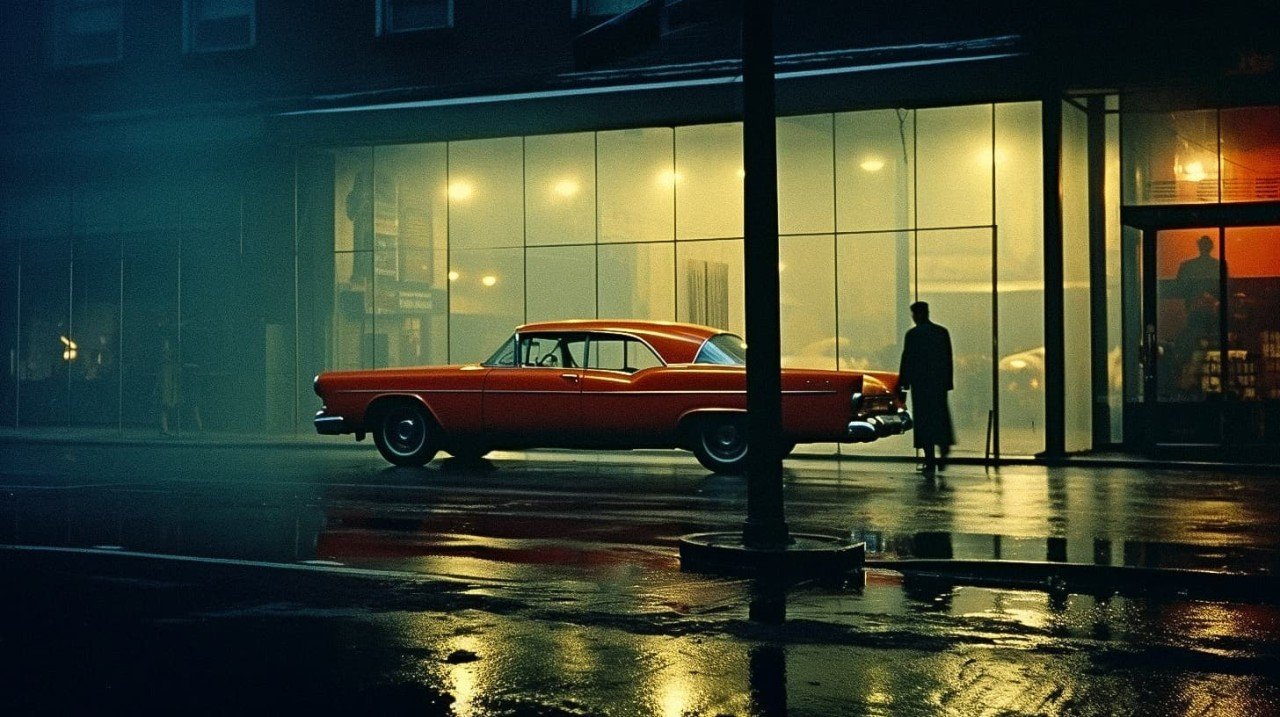

















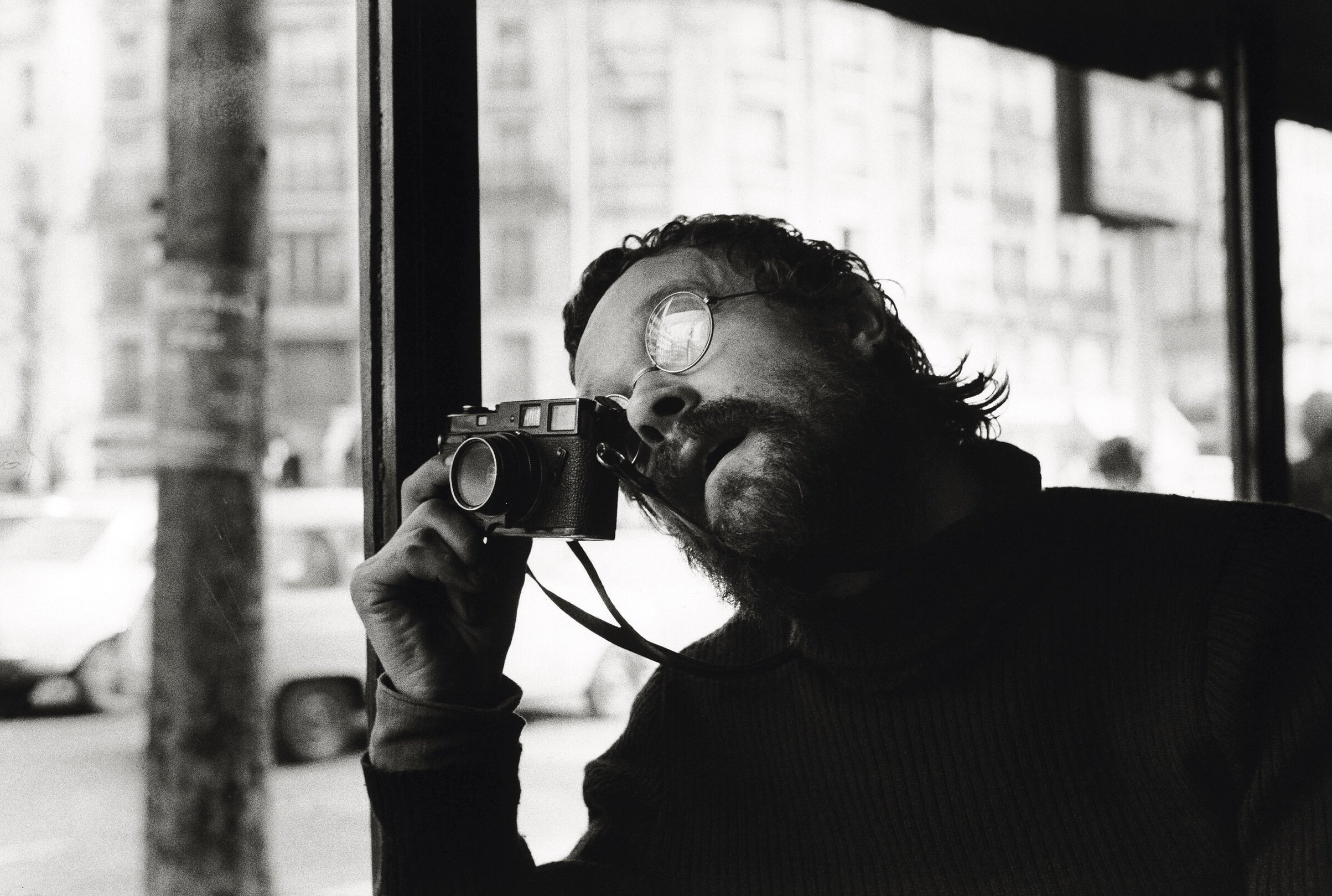

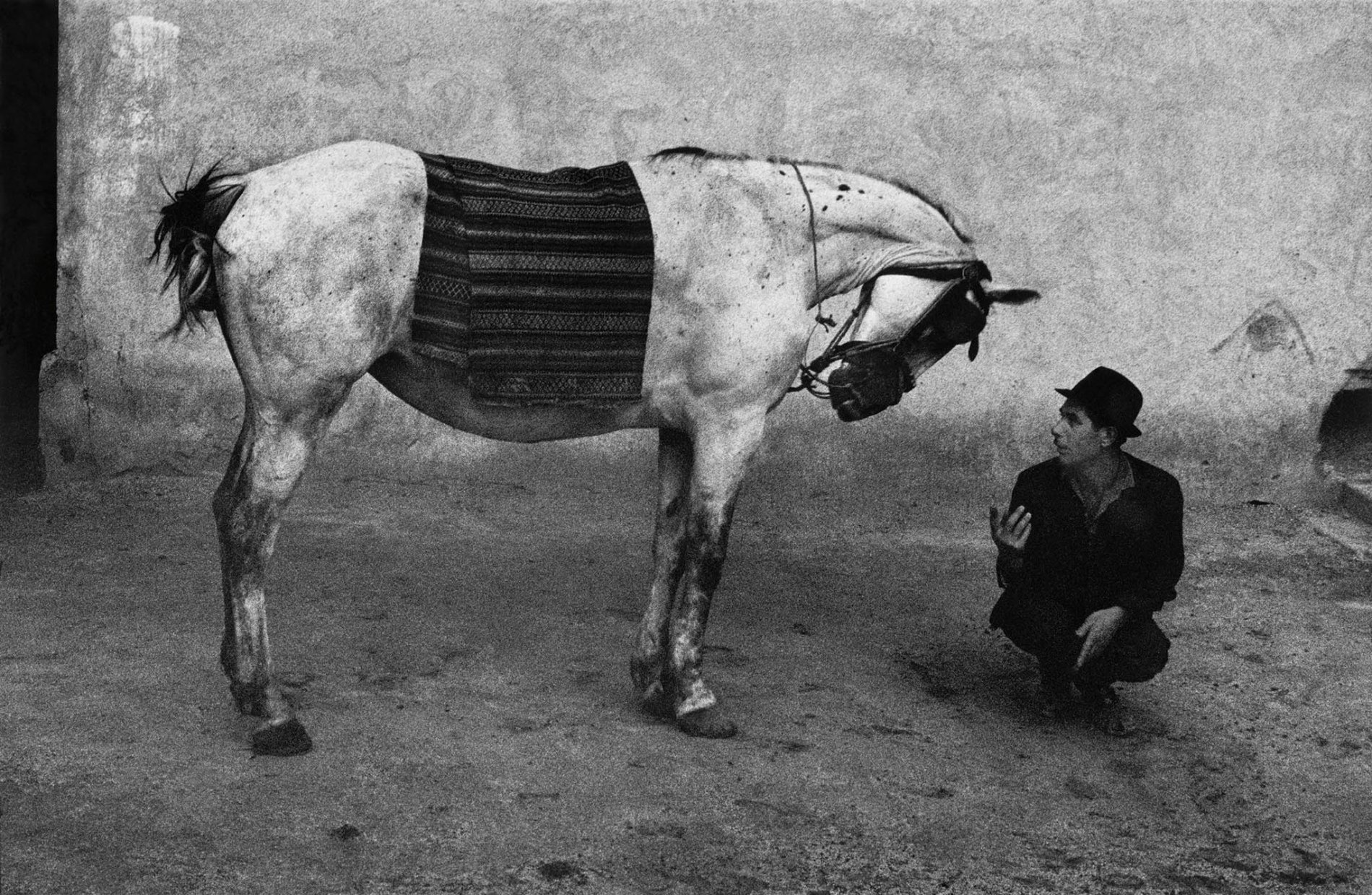


































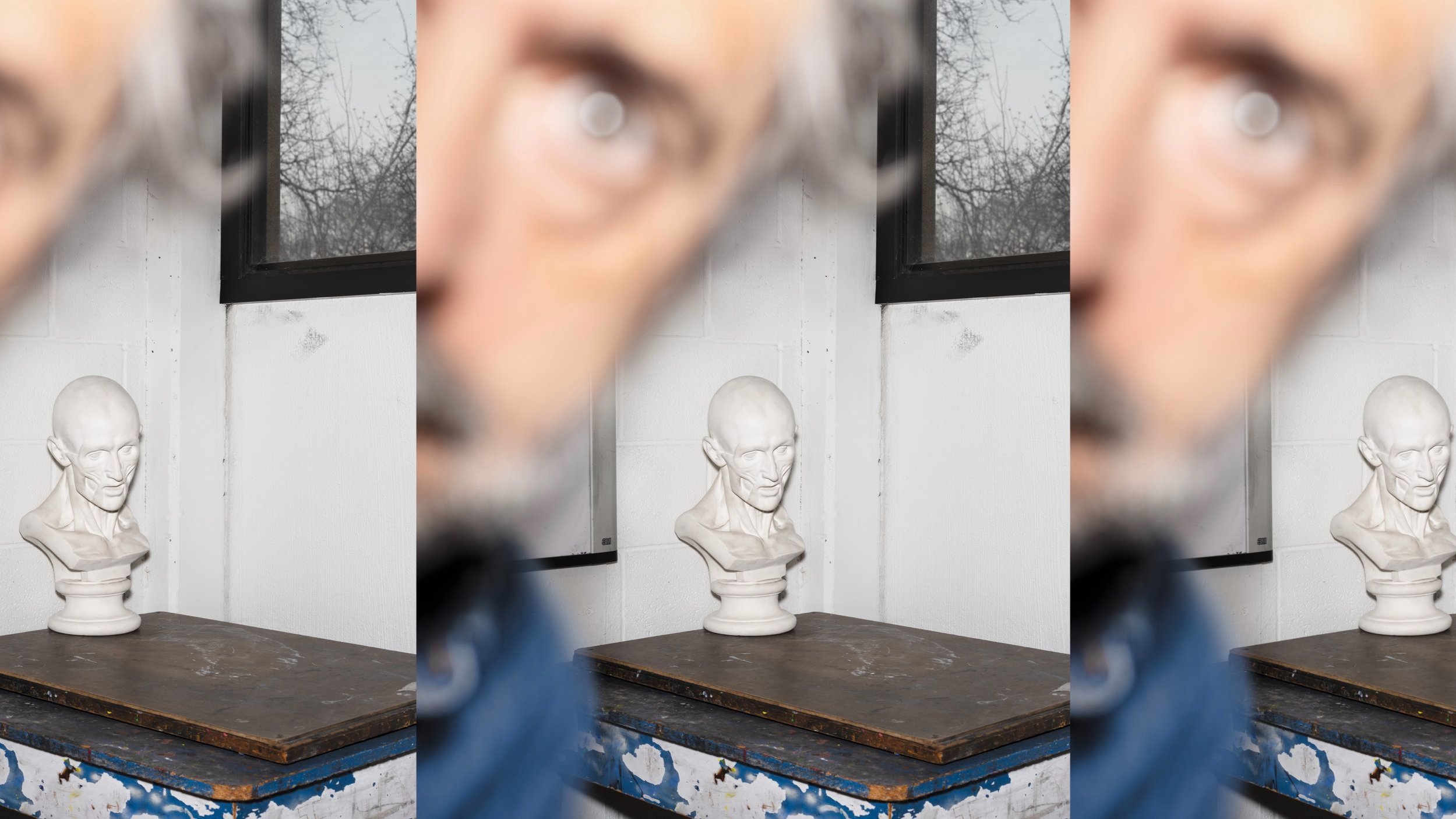








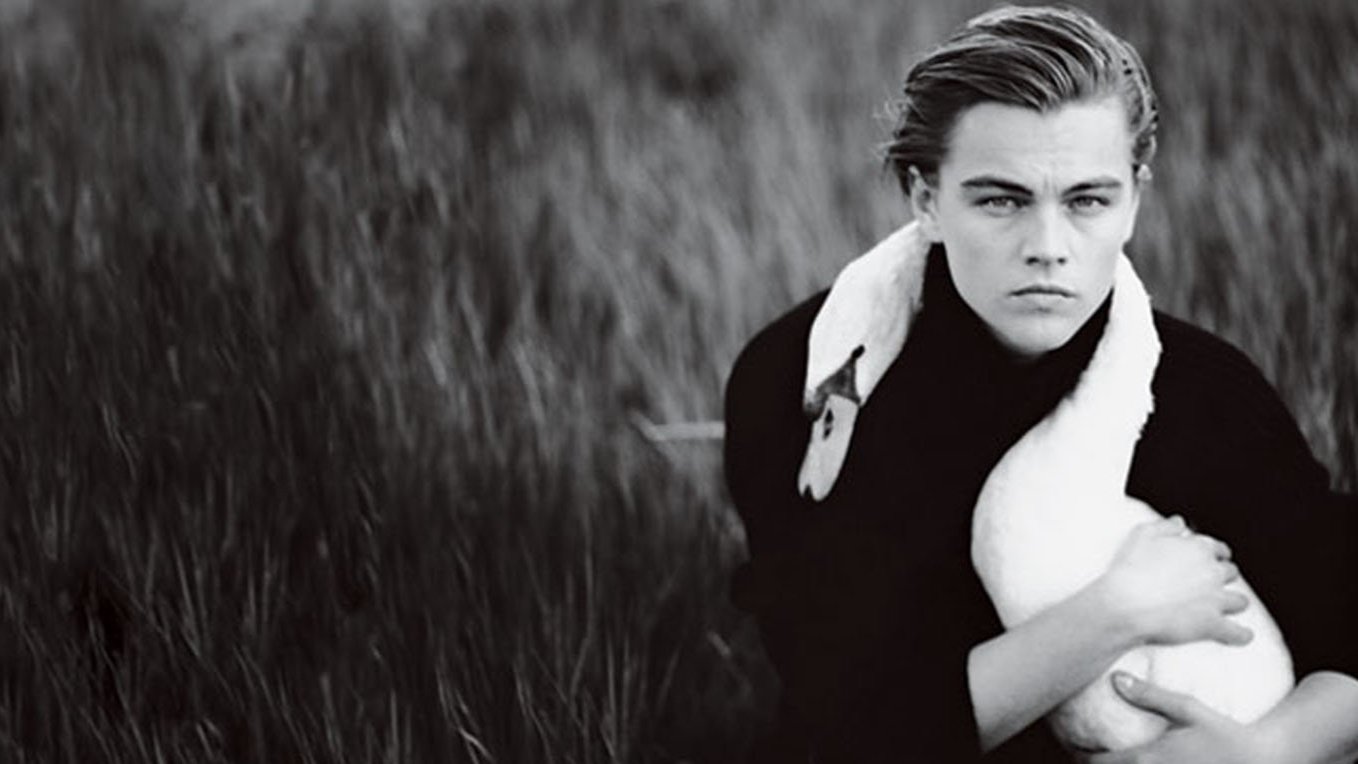



















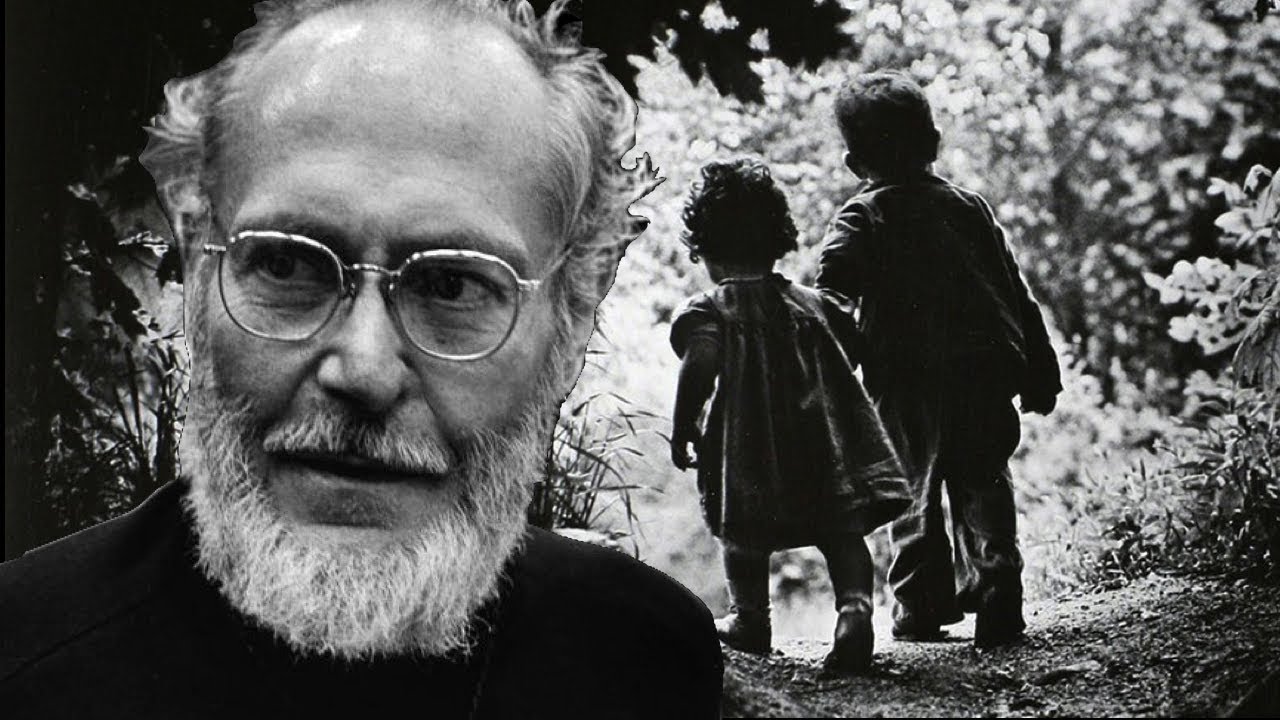

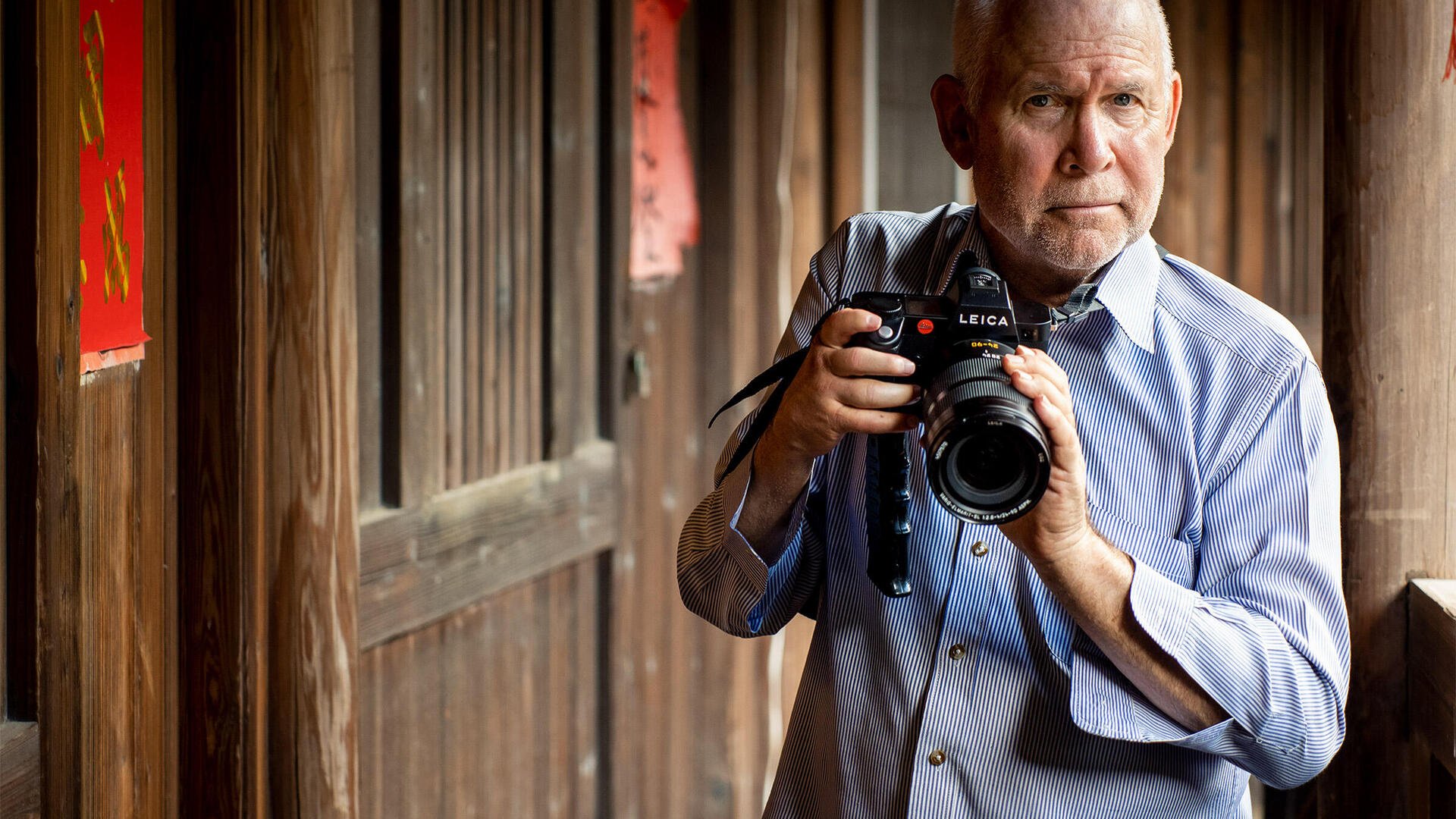





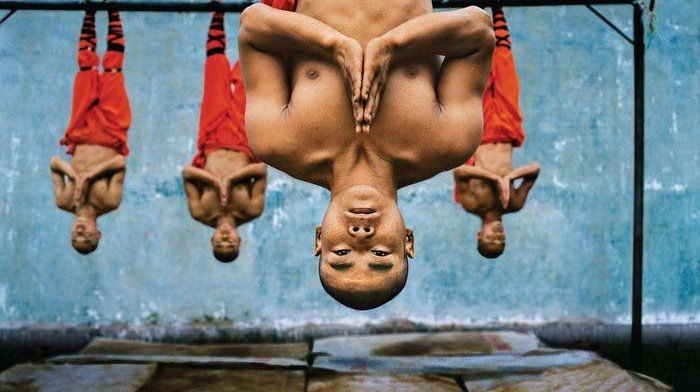













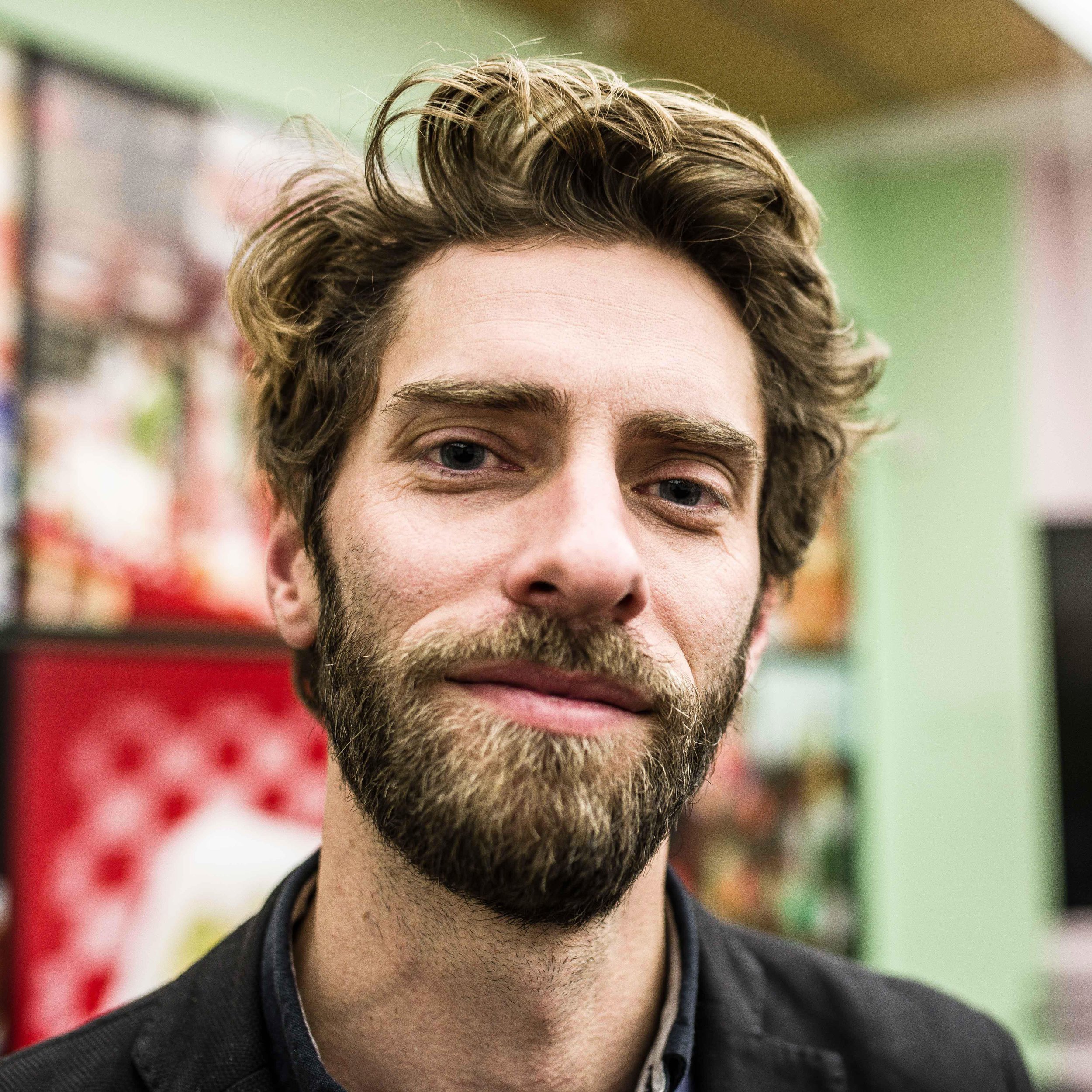







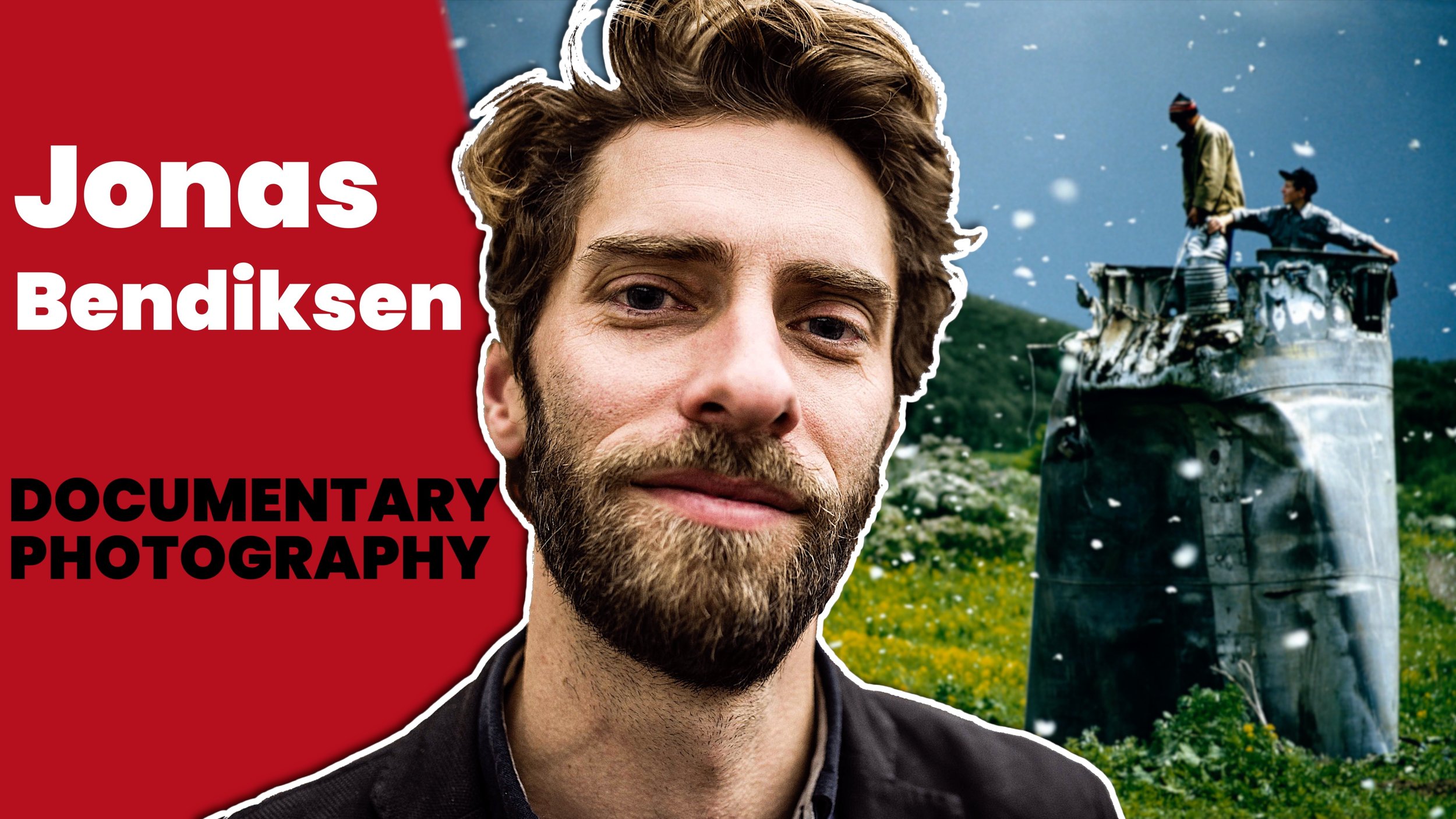








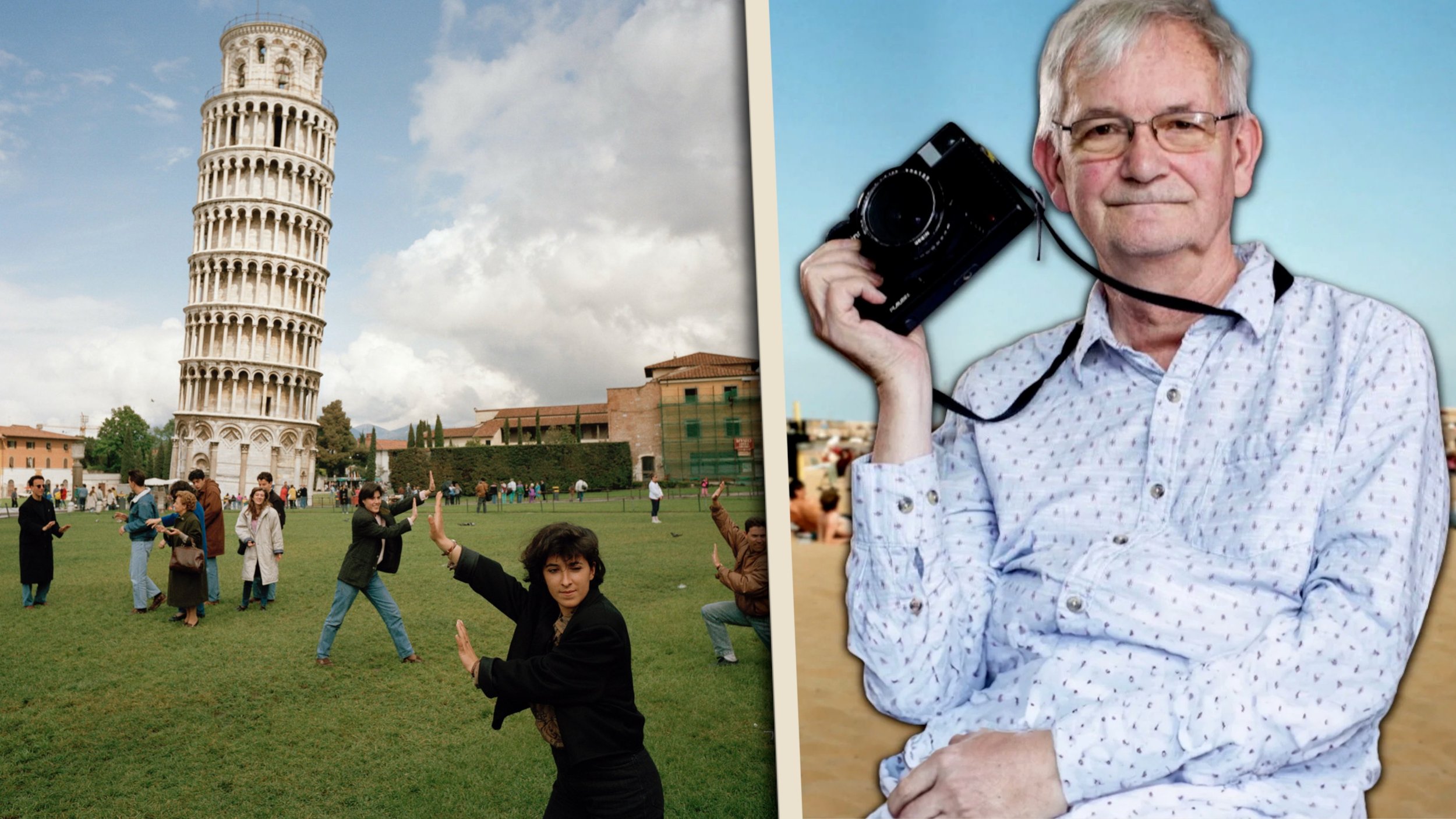

![Martin Parr's advice for better photos[video]](https://images.squarespace-cdn.com/content/v1/5b670534b98a78d5e84a7d19/1709316822341-S7A2G20XX4CL7RHLYW0S/Advice+for+better+photos+Parr+no+text.jpg)

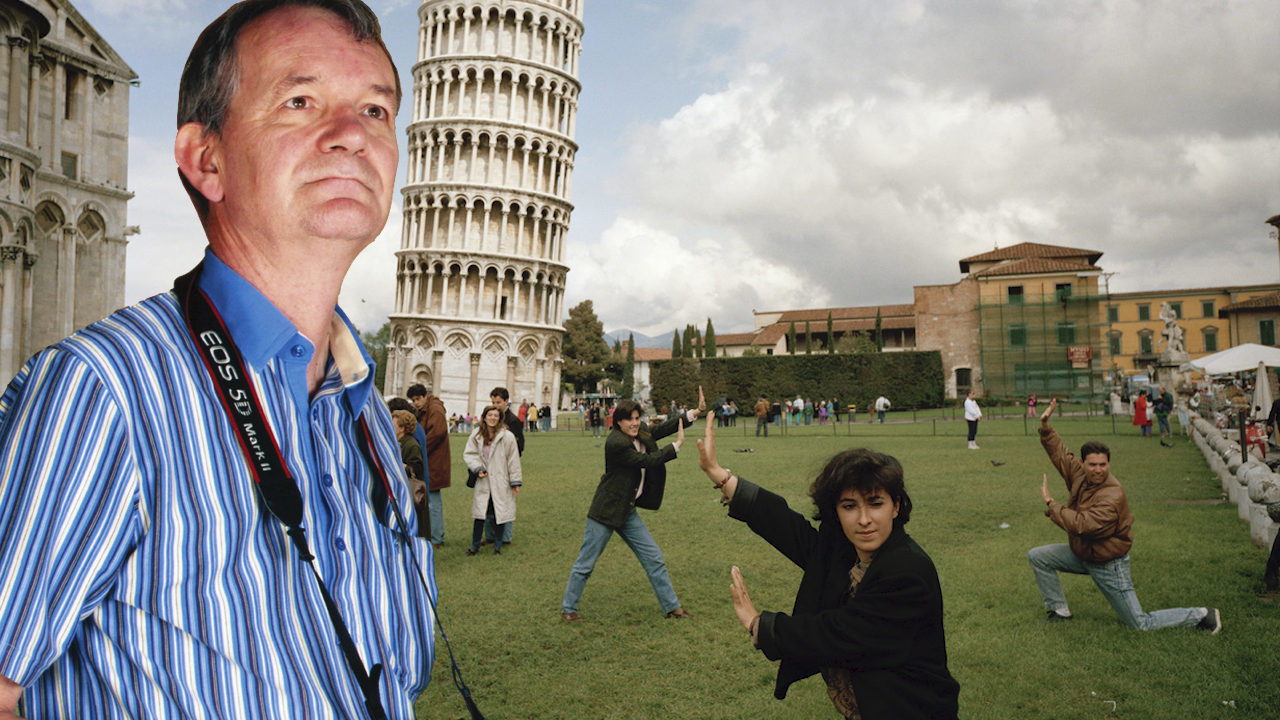
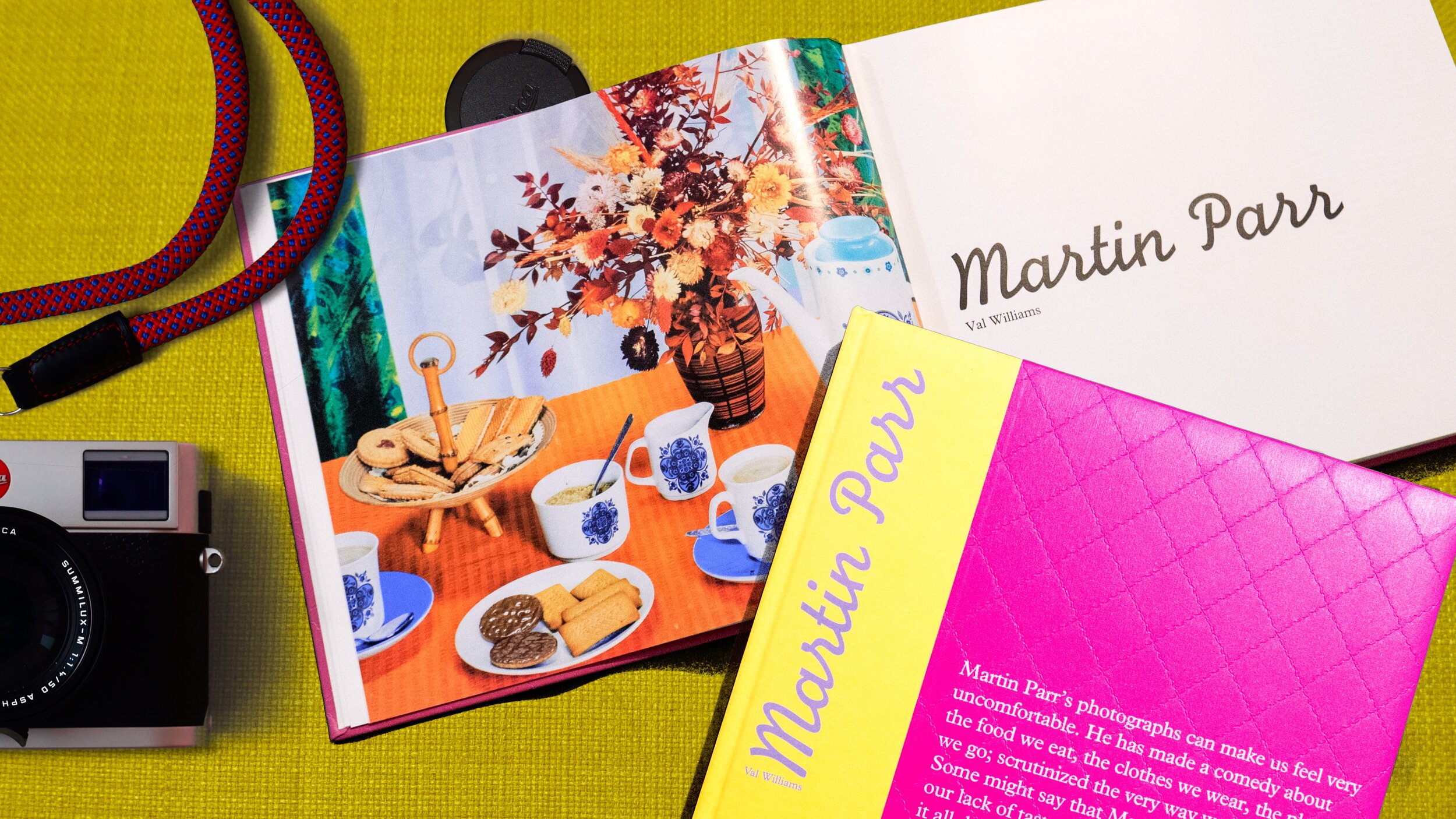



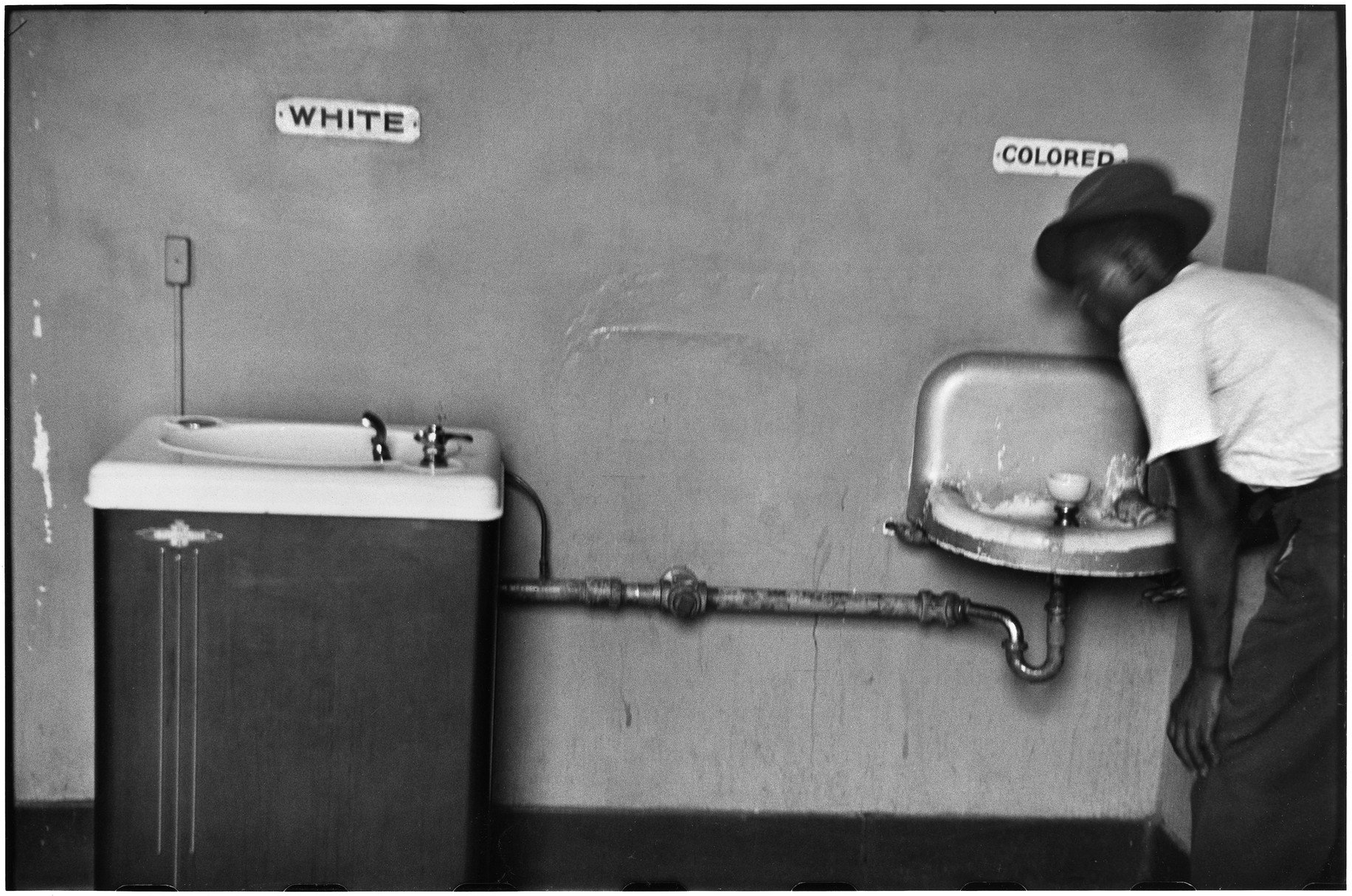

















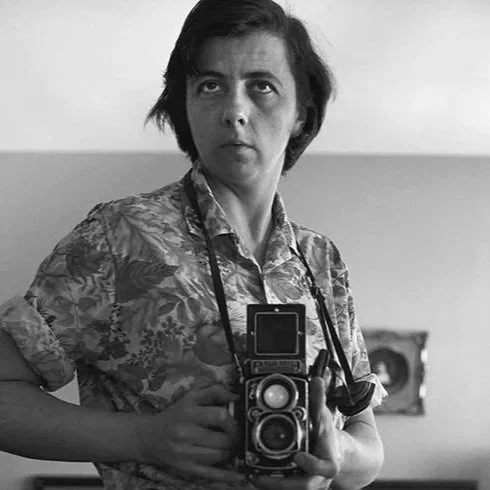








































Donec id justo non metus auctor commodo ut quis enim. Mauris fringilla dolor vel condimentum imperdiet.